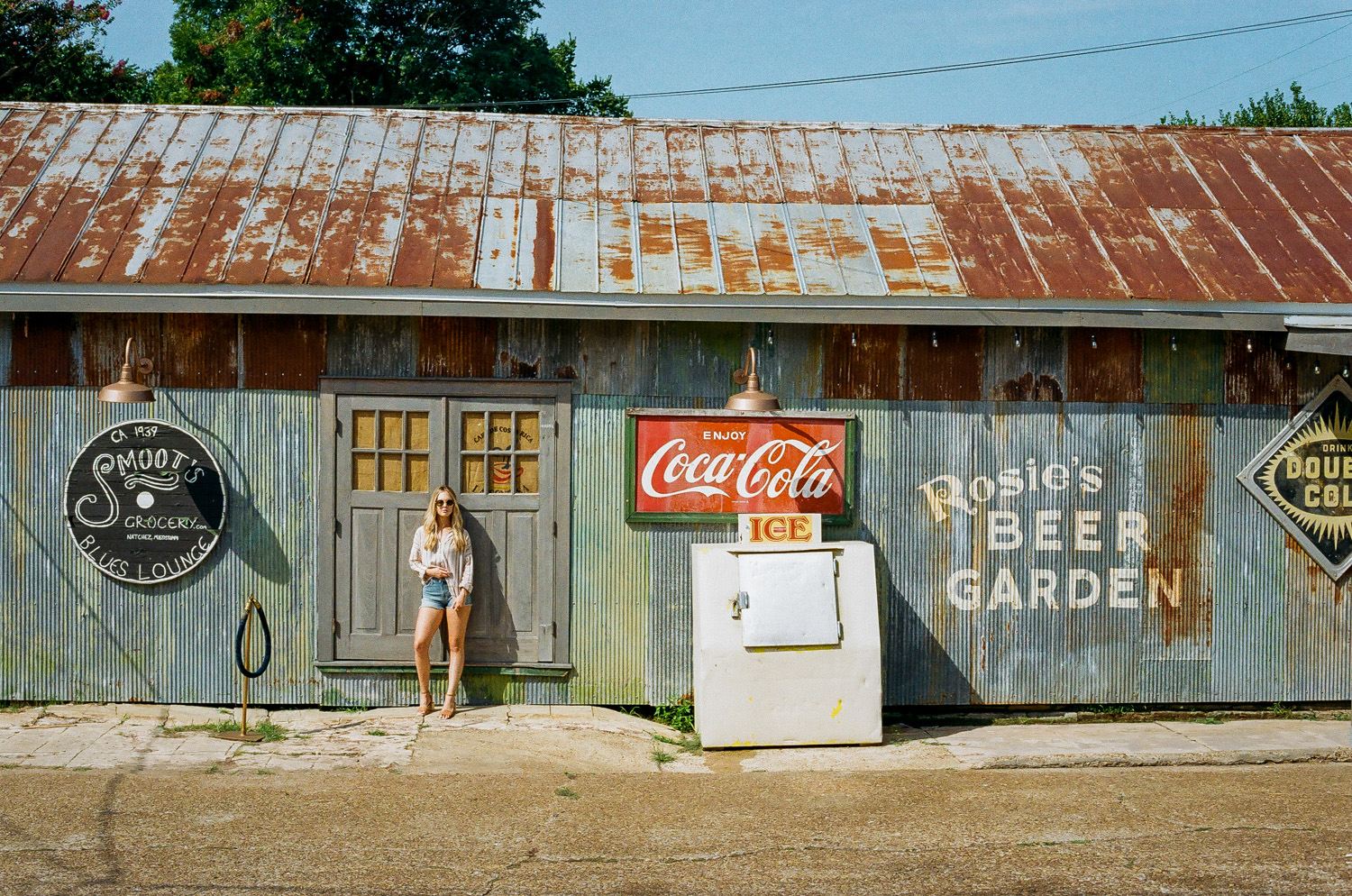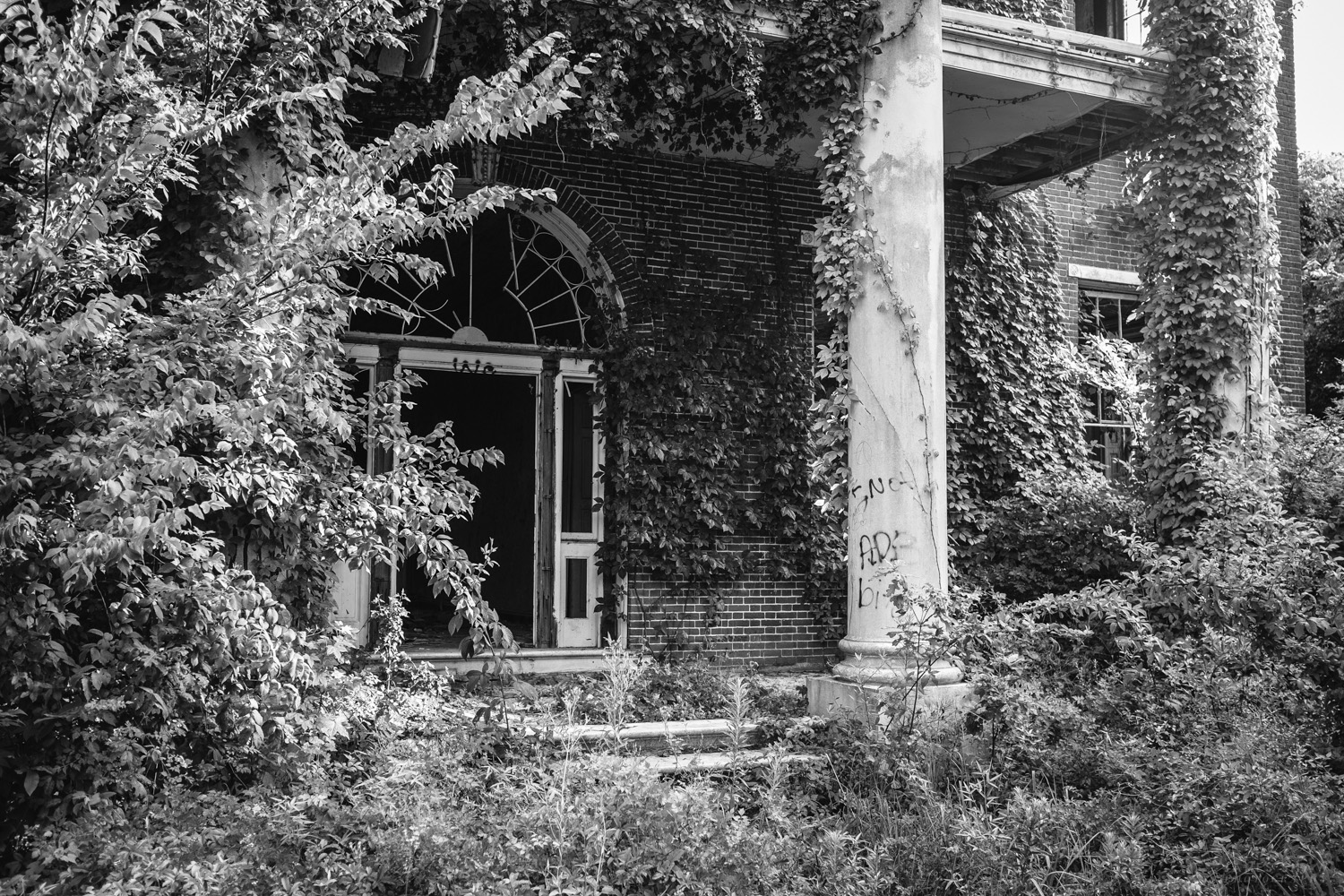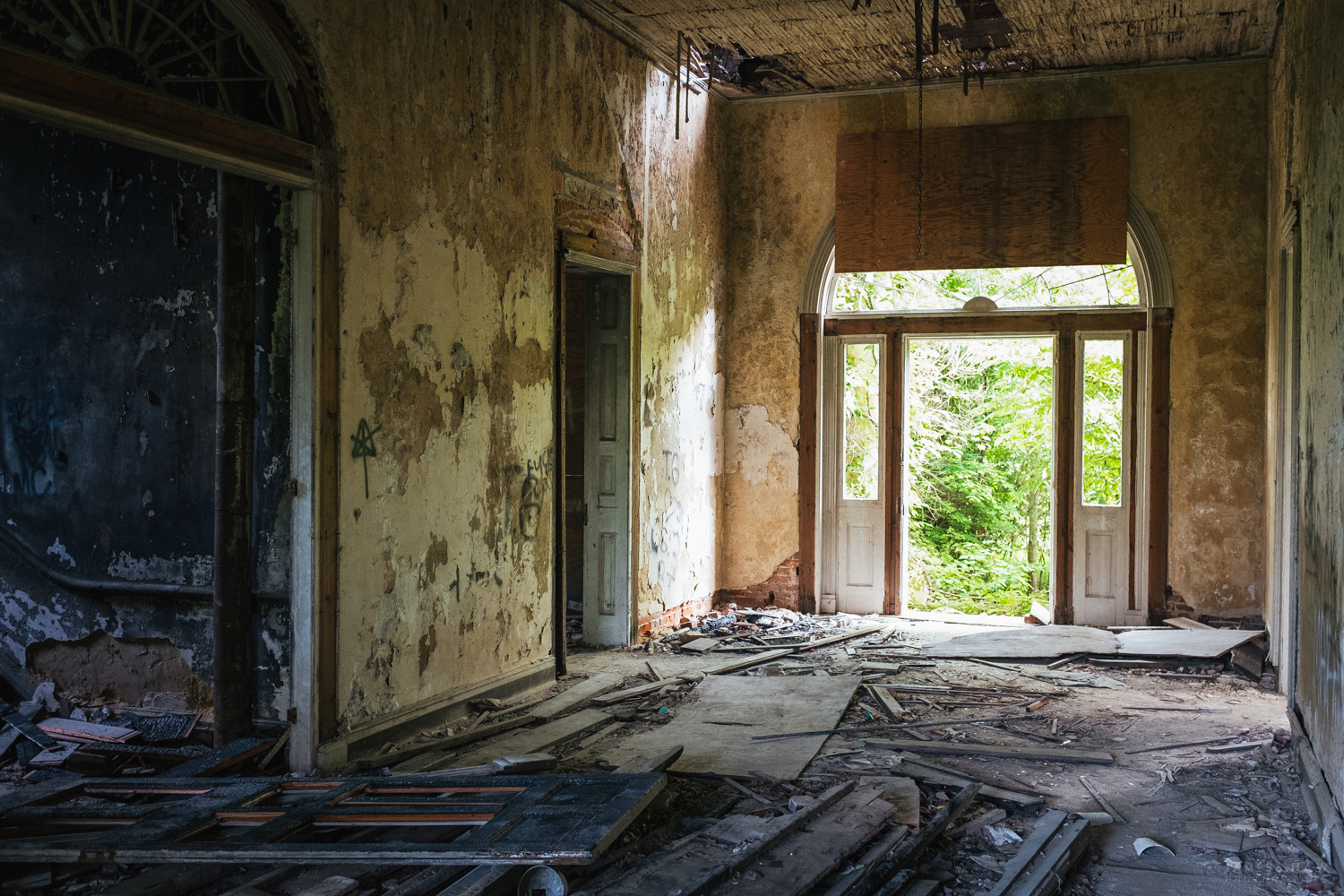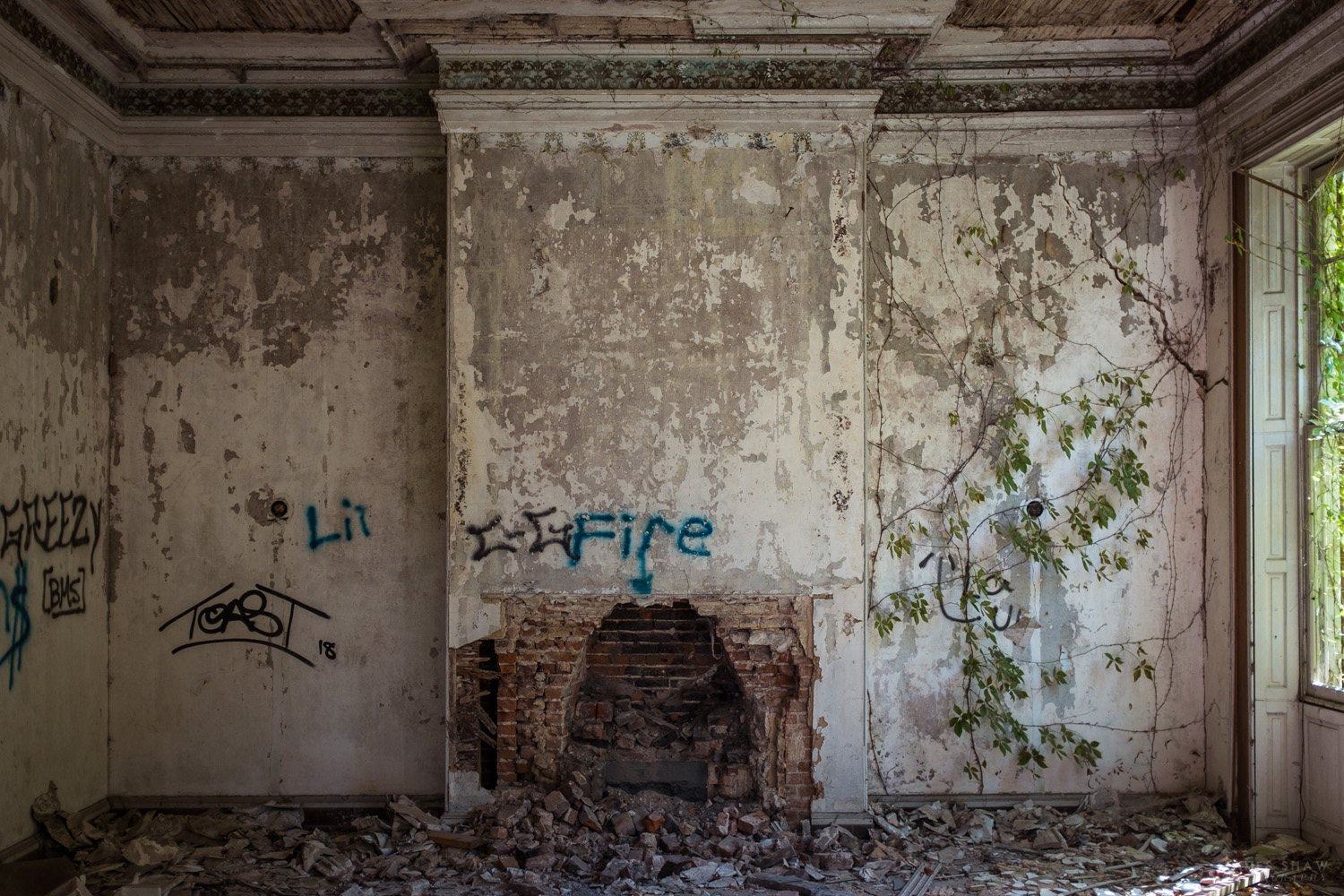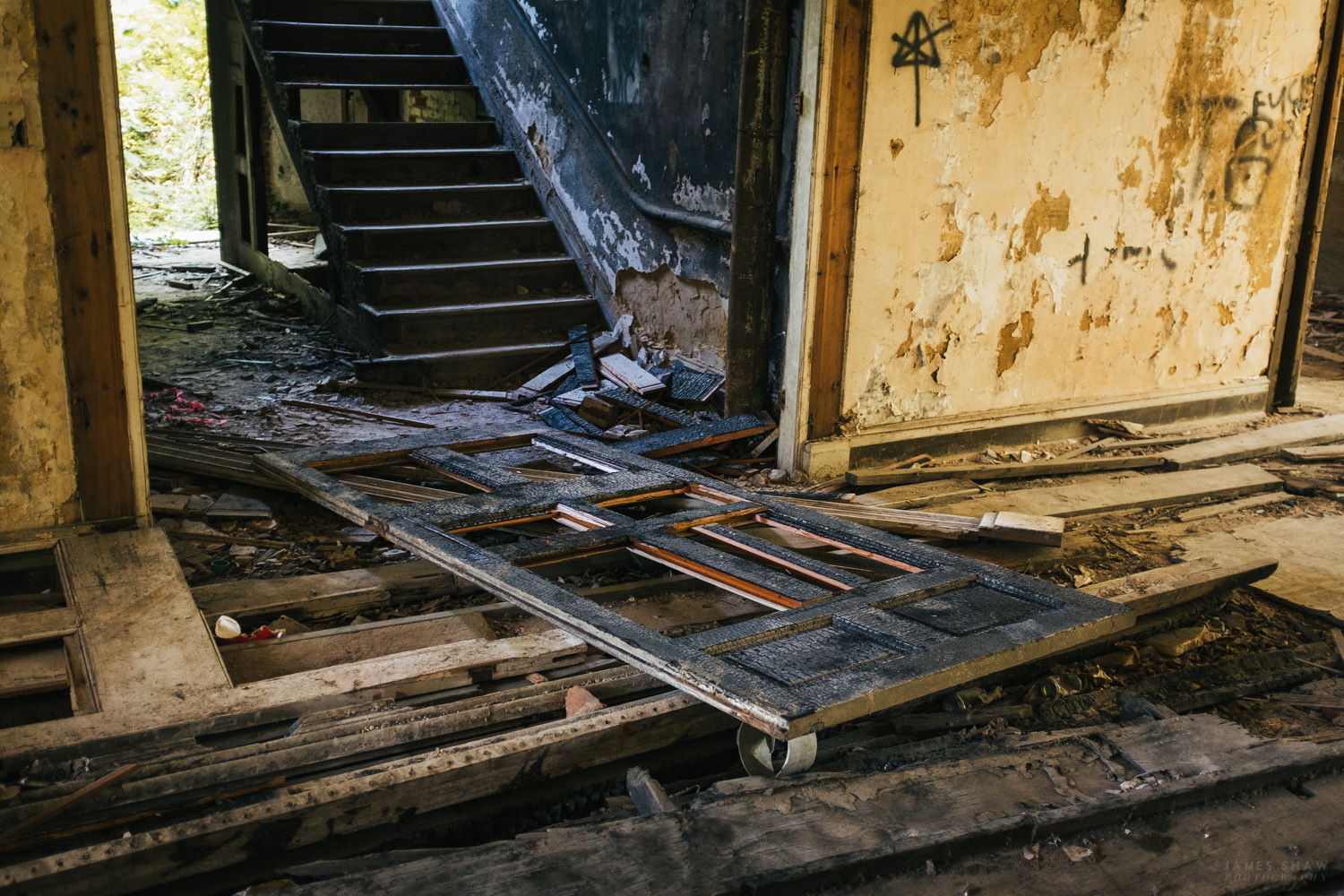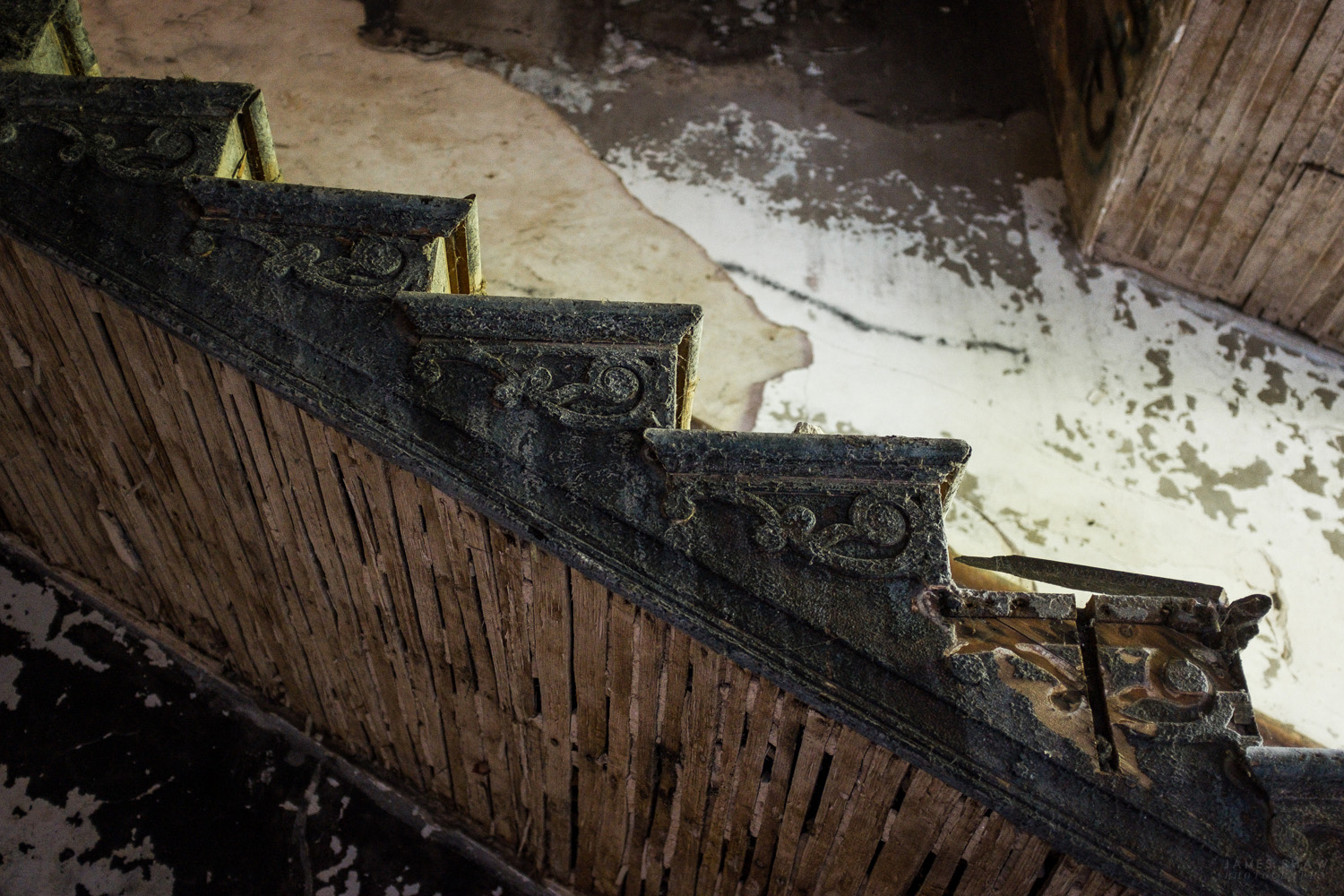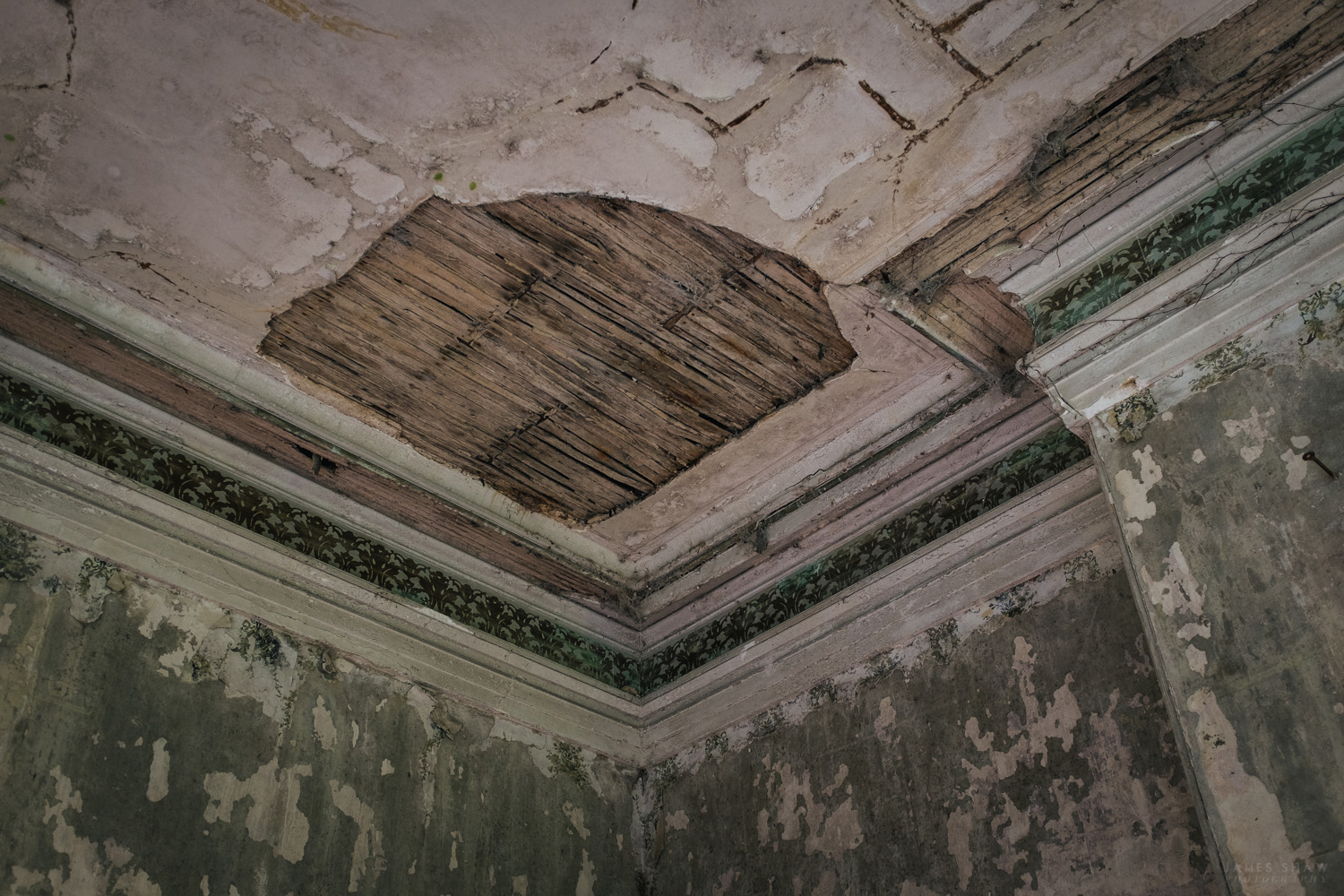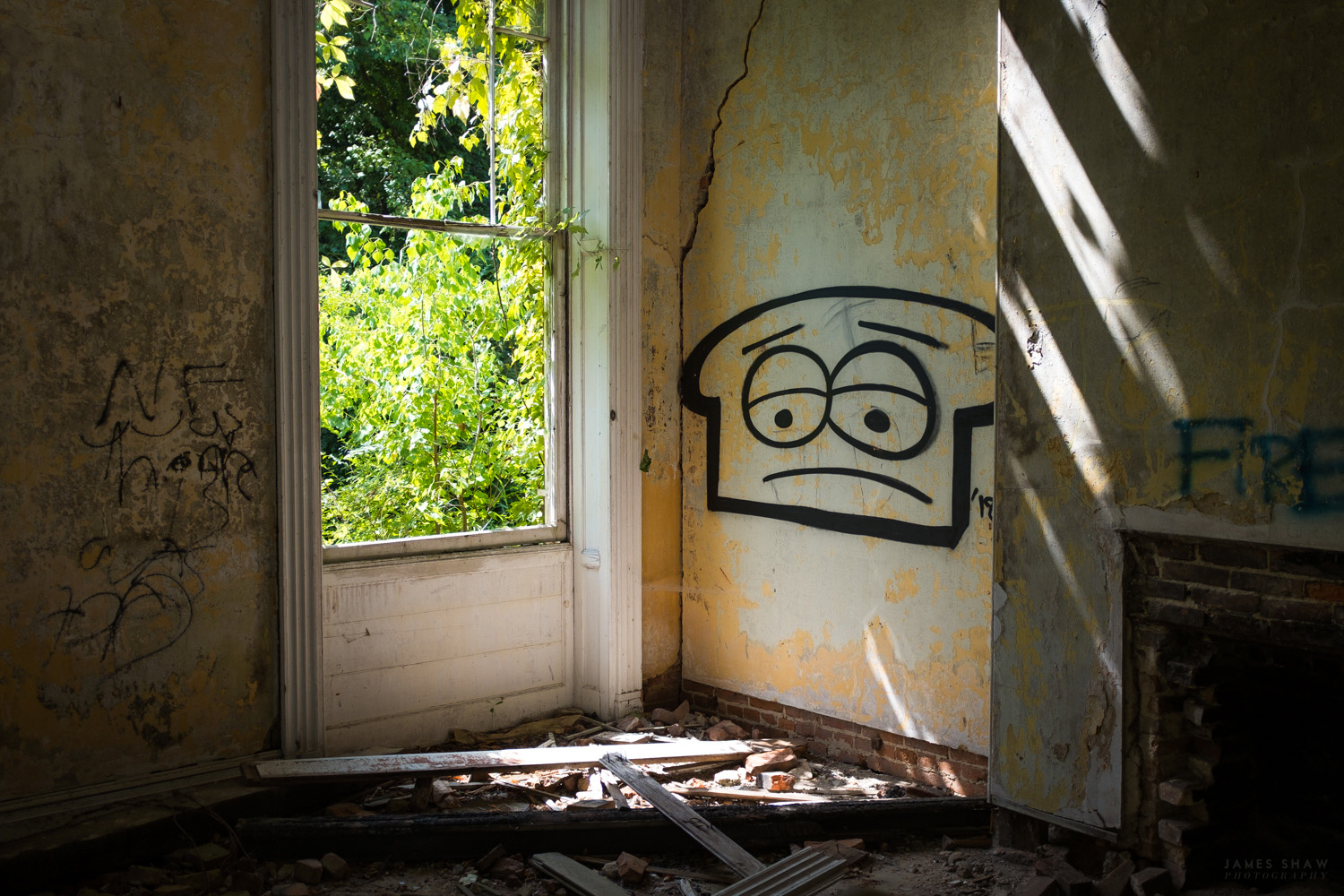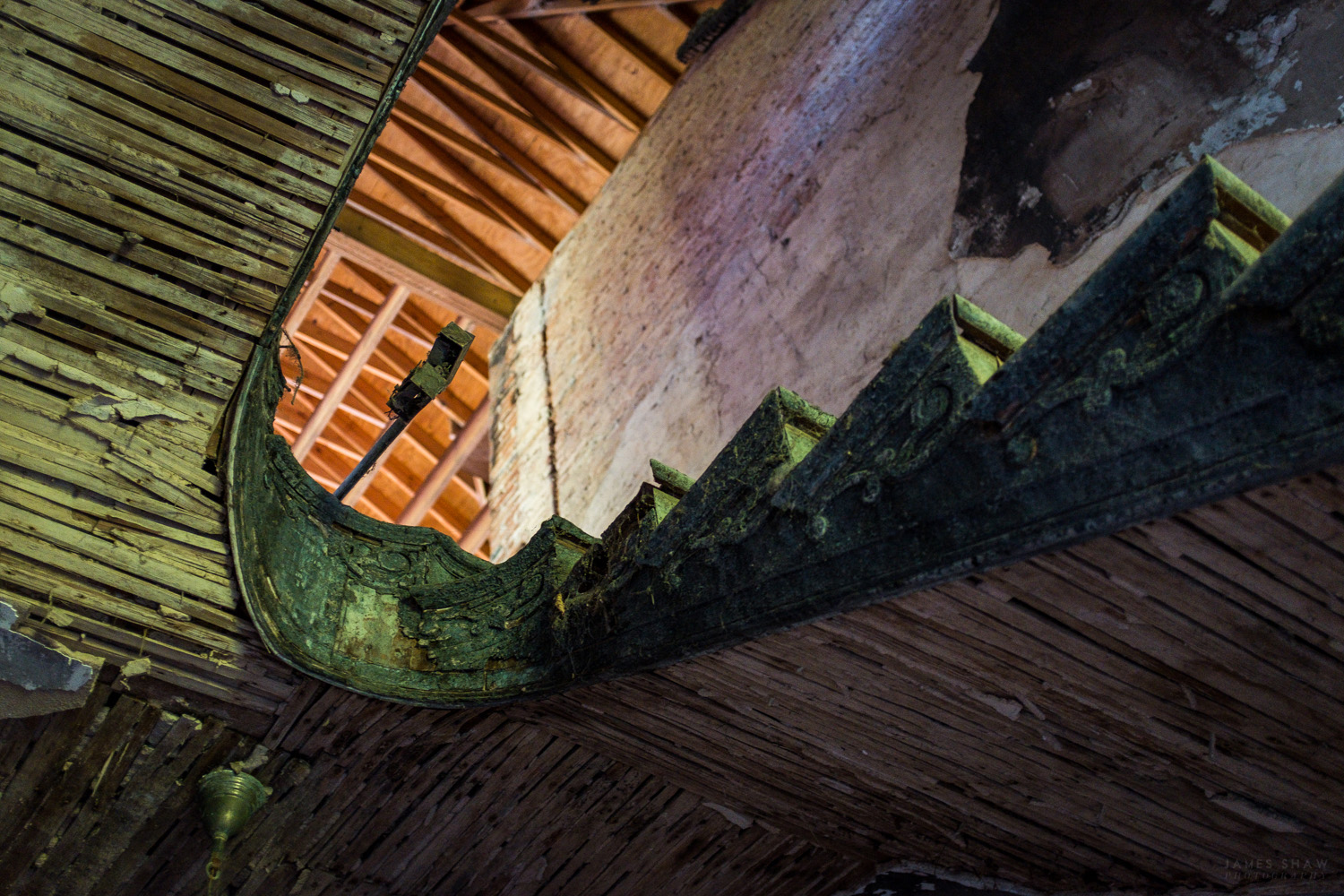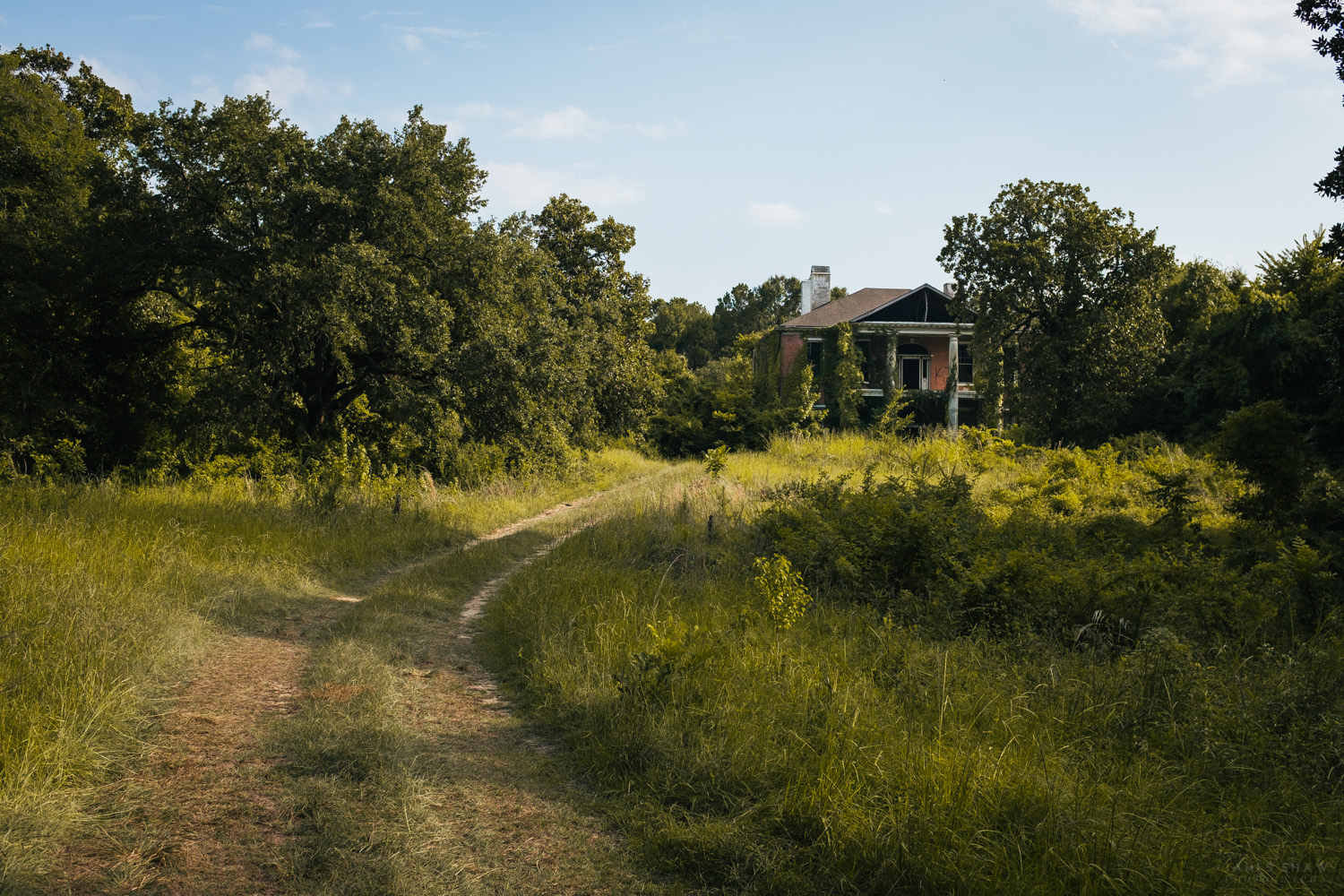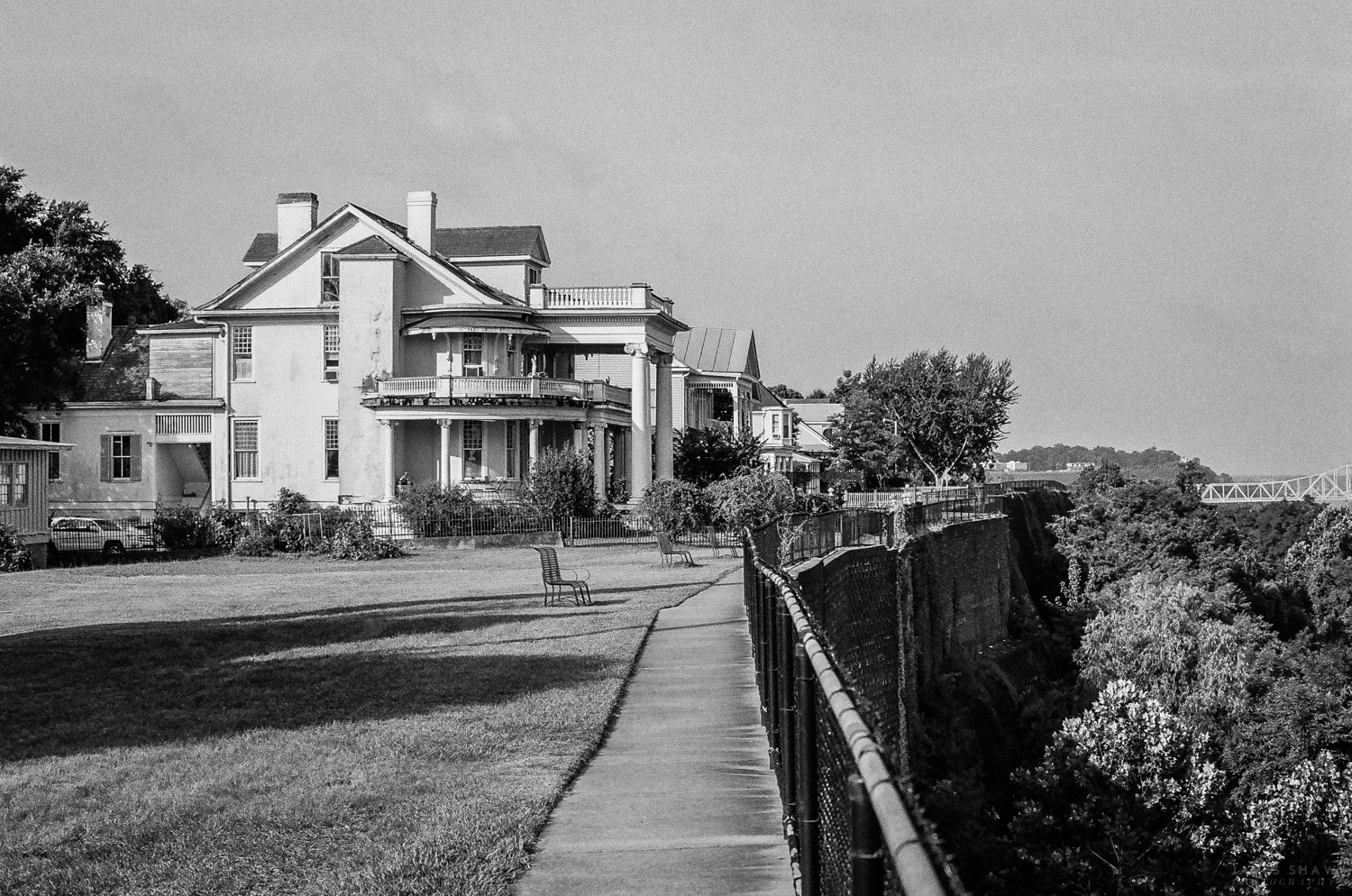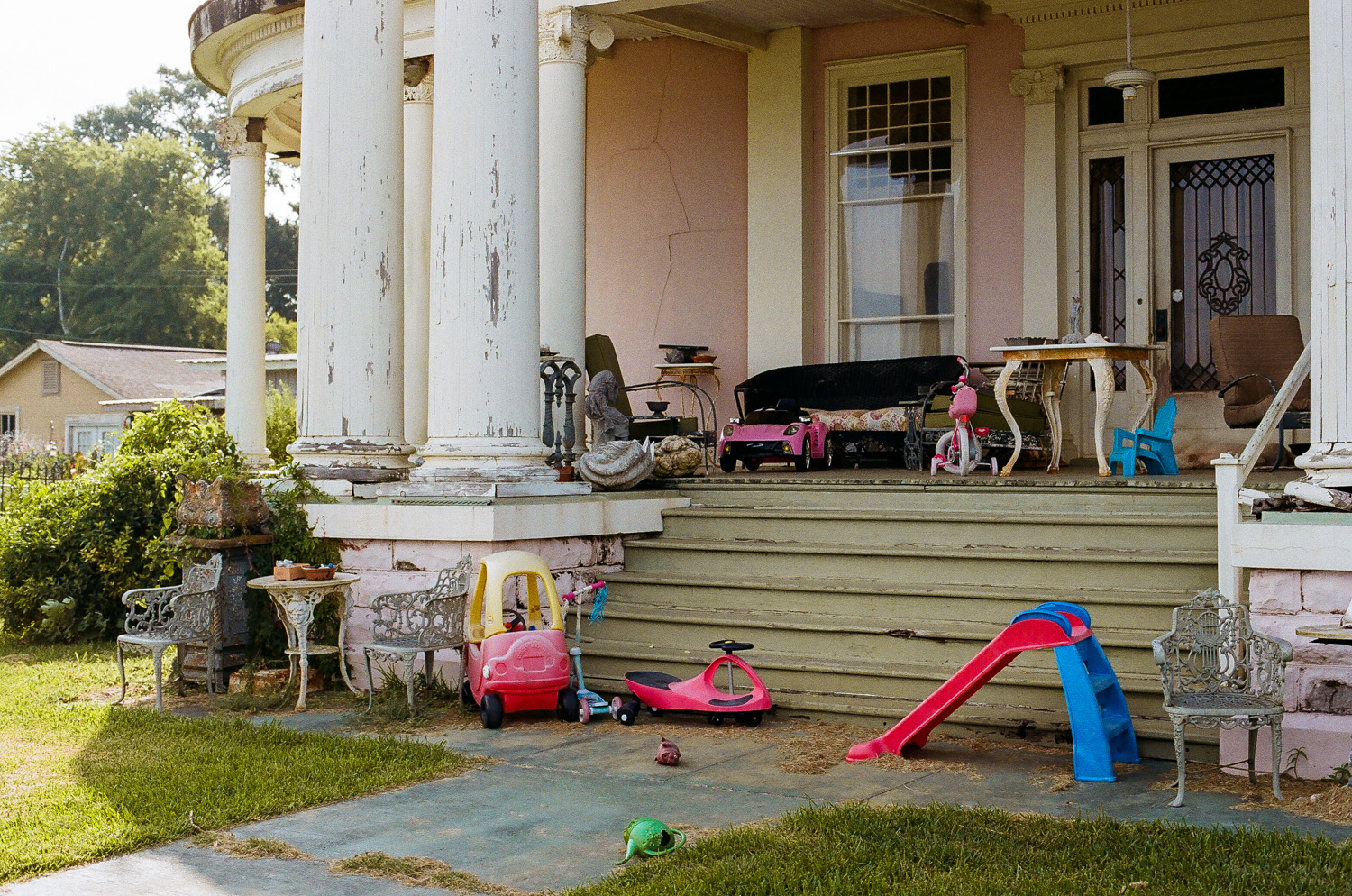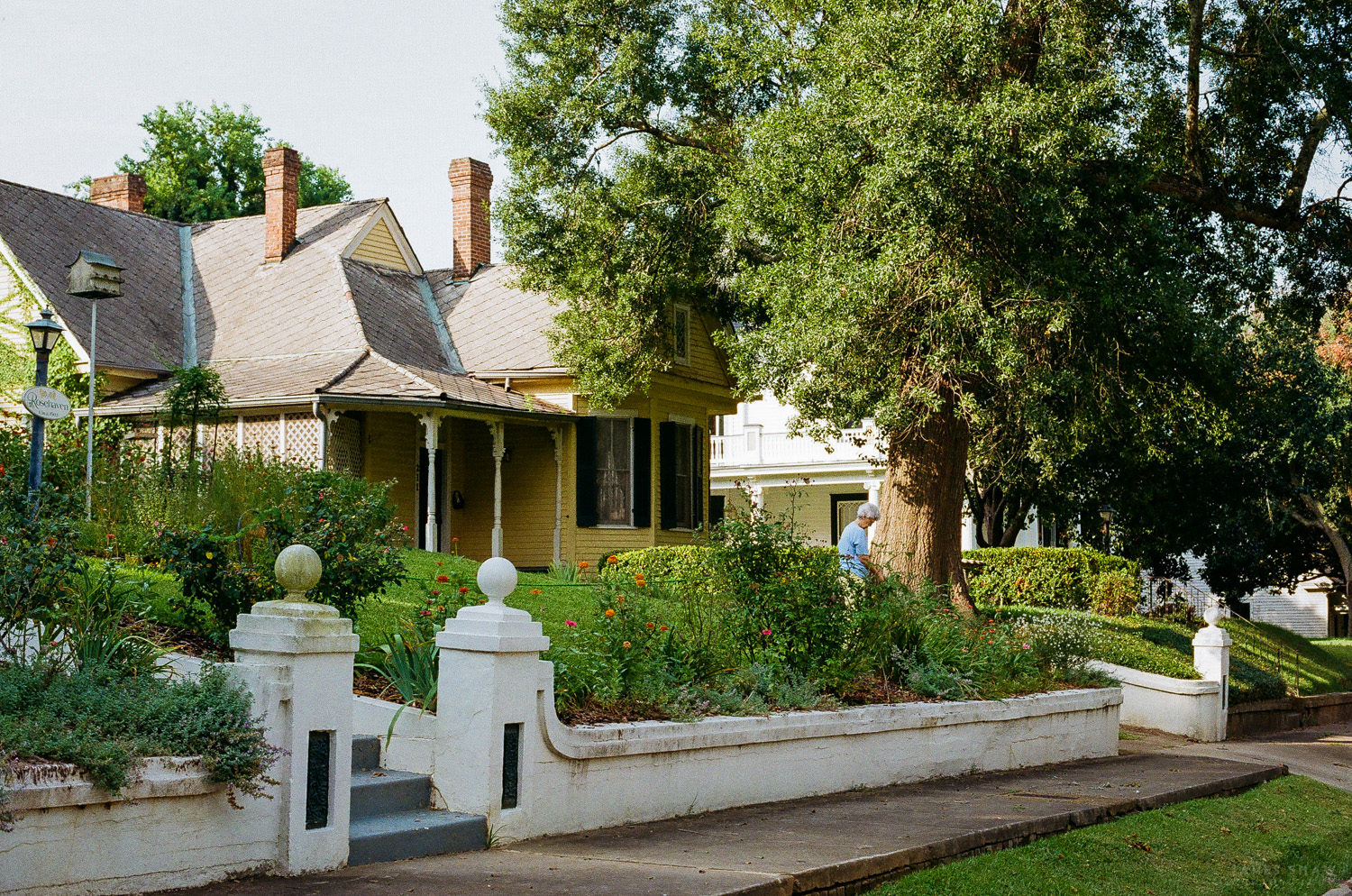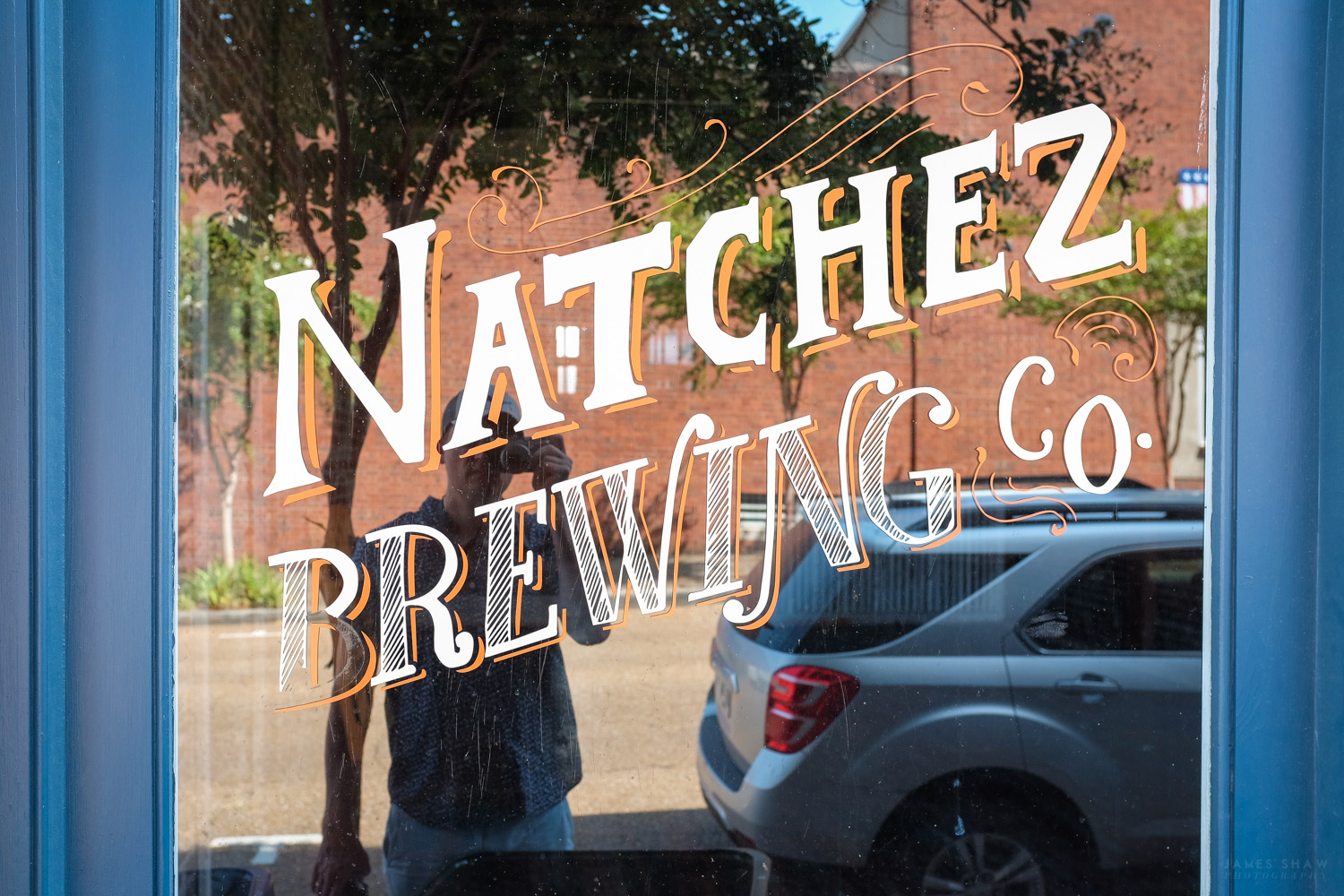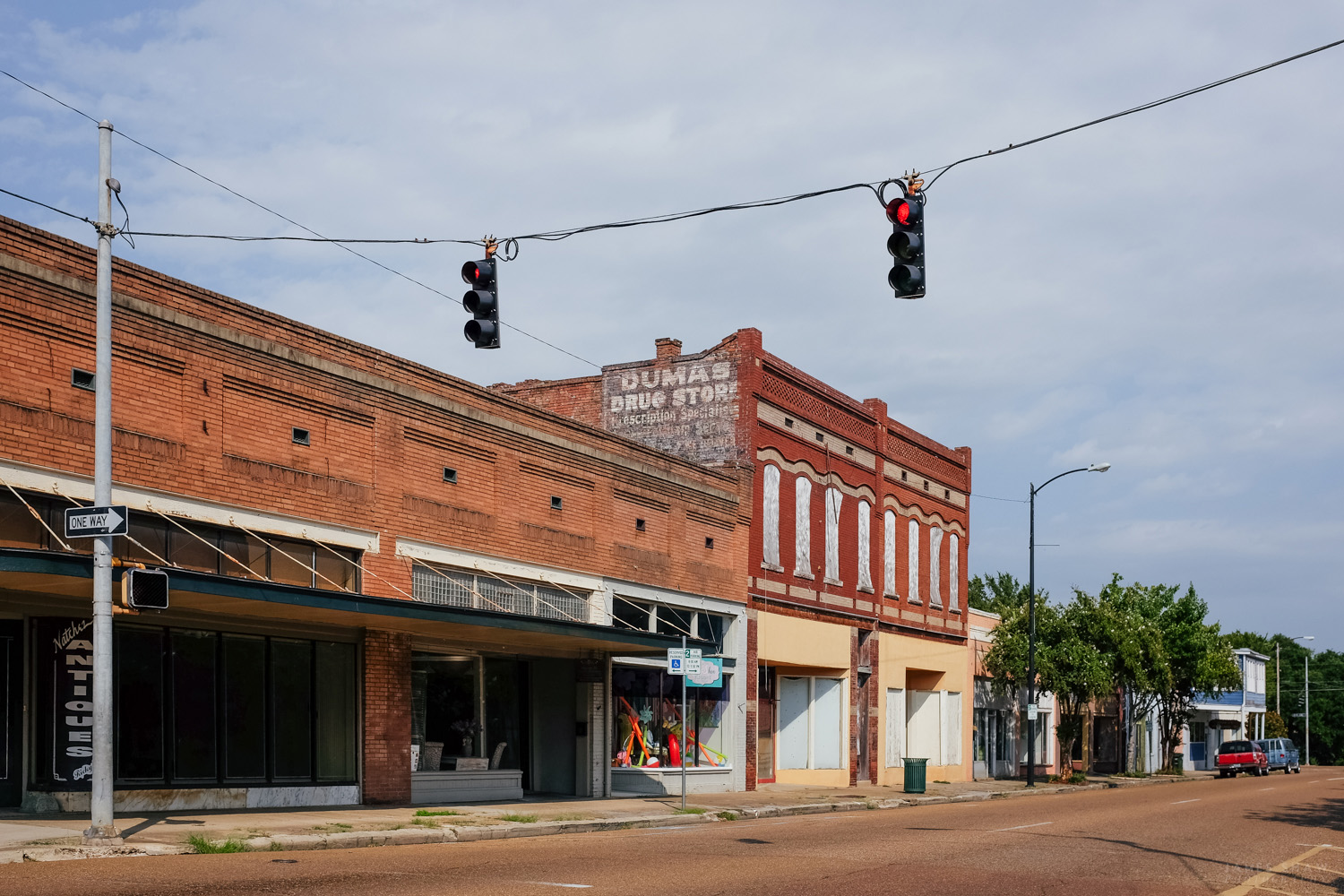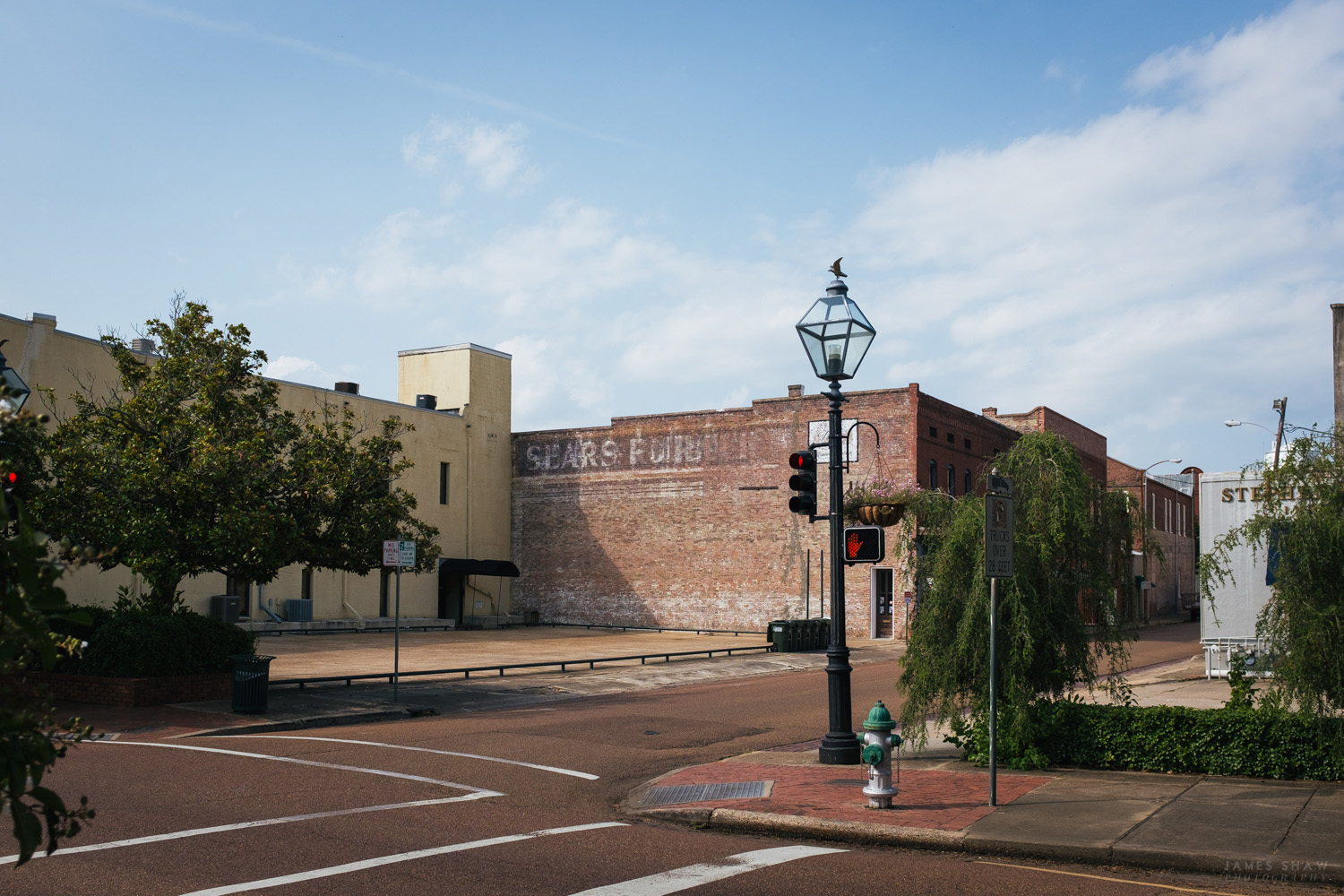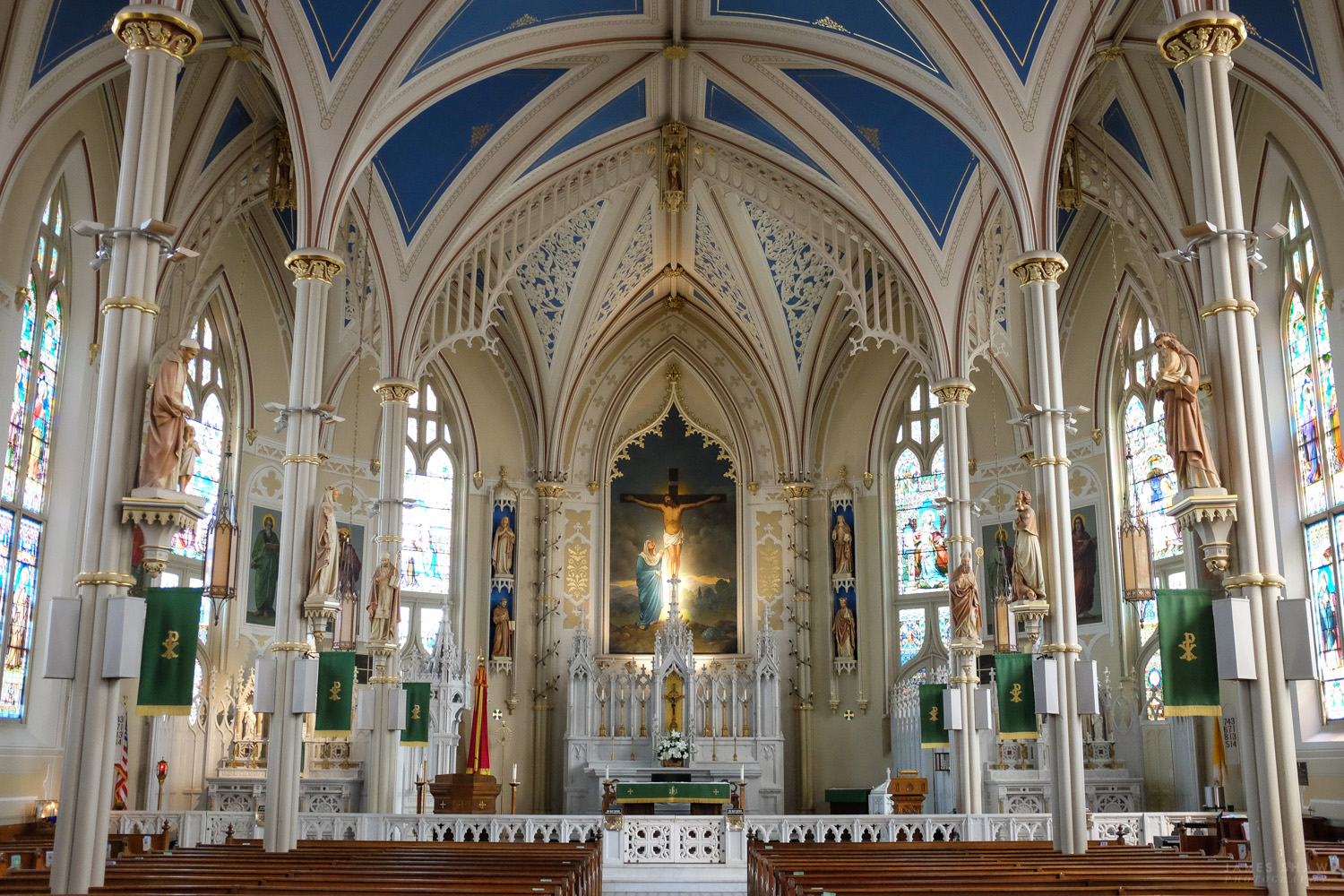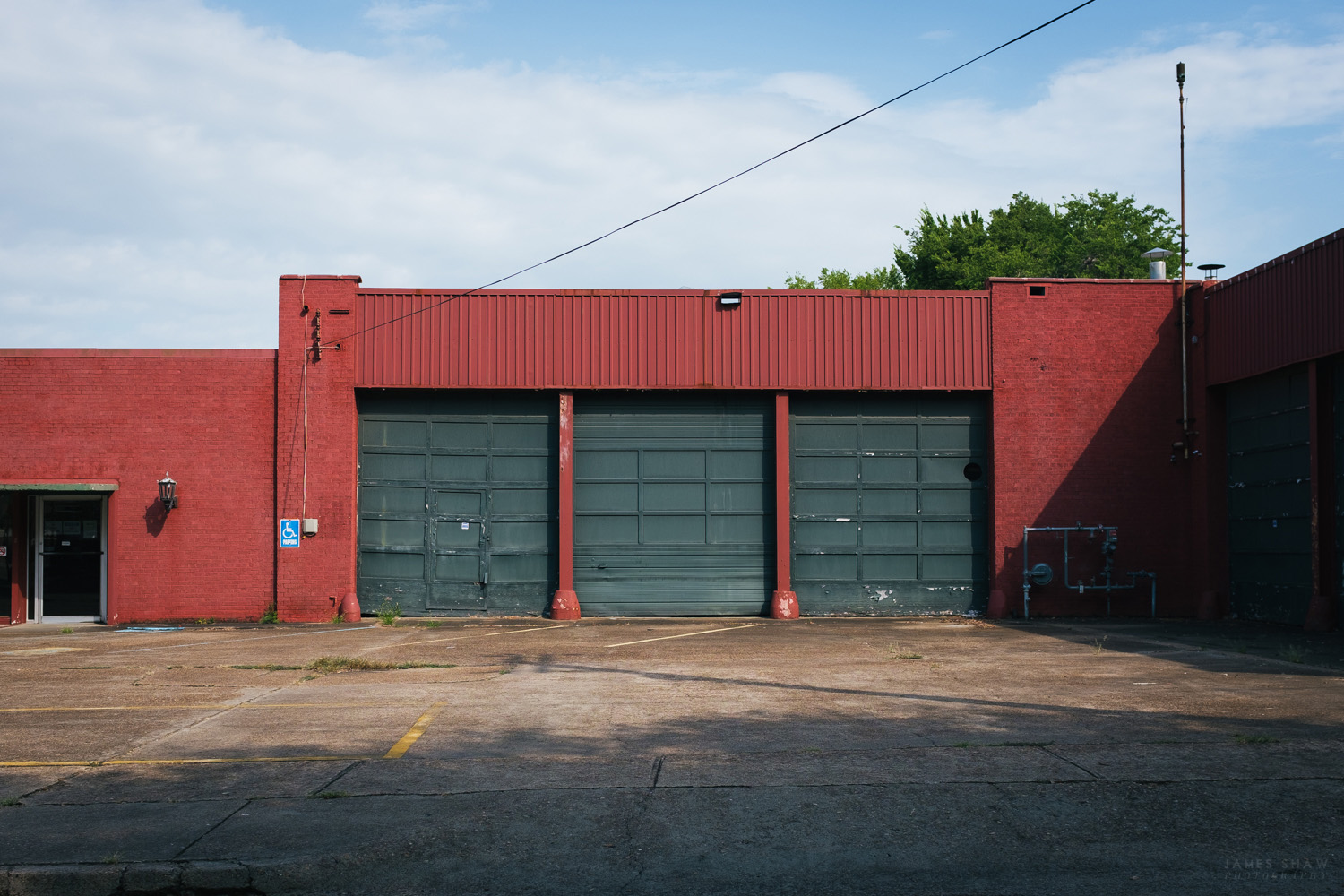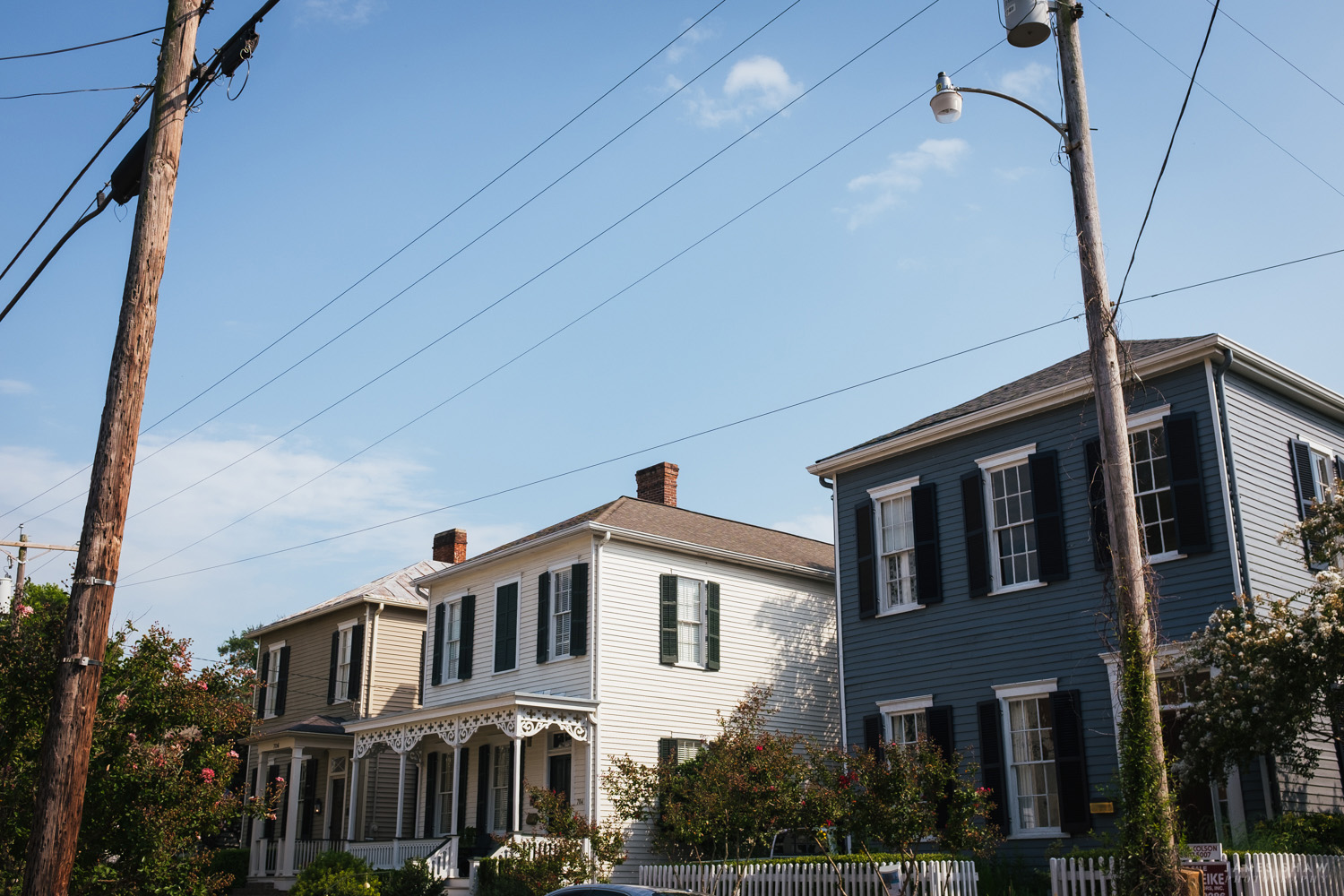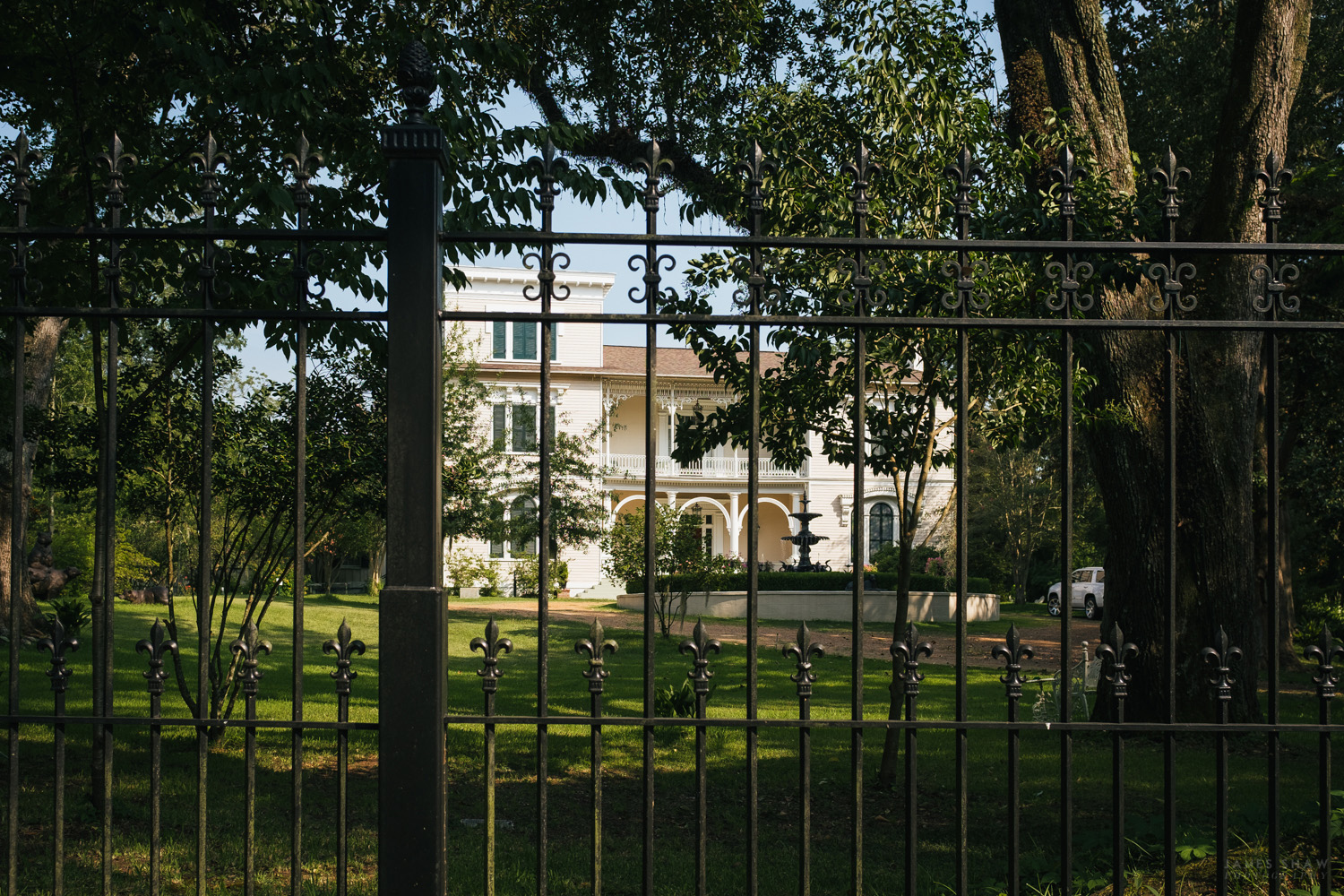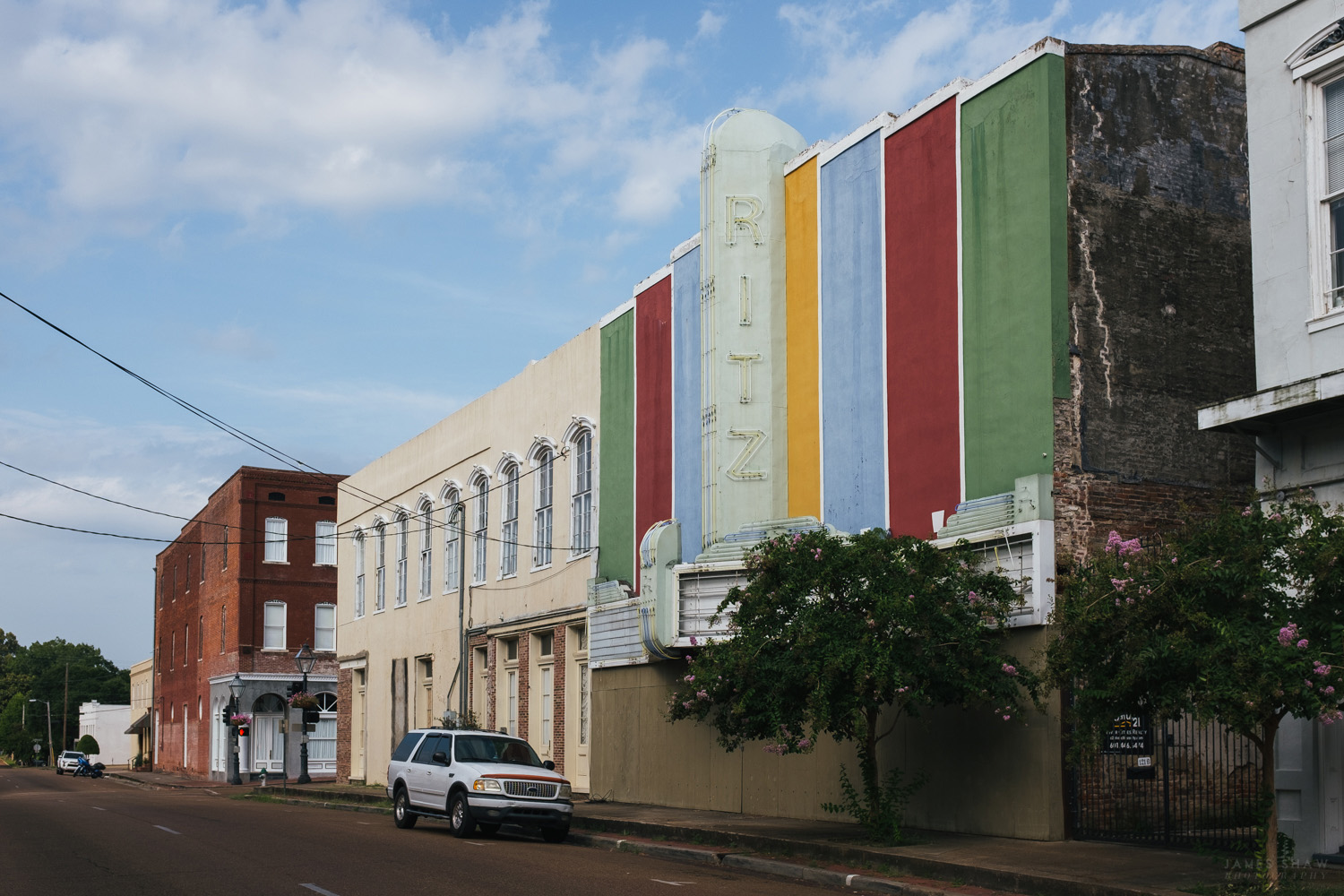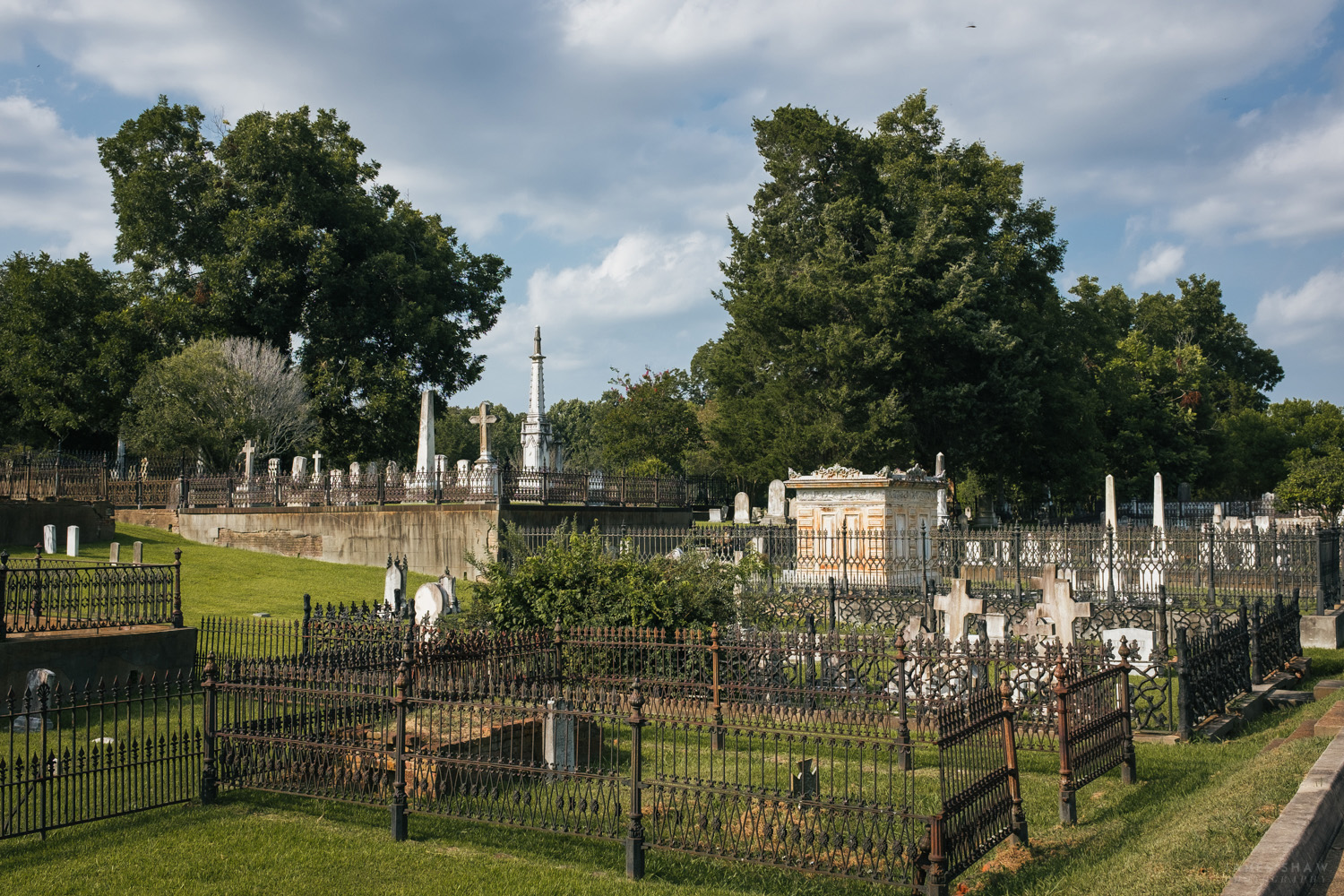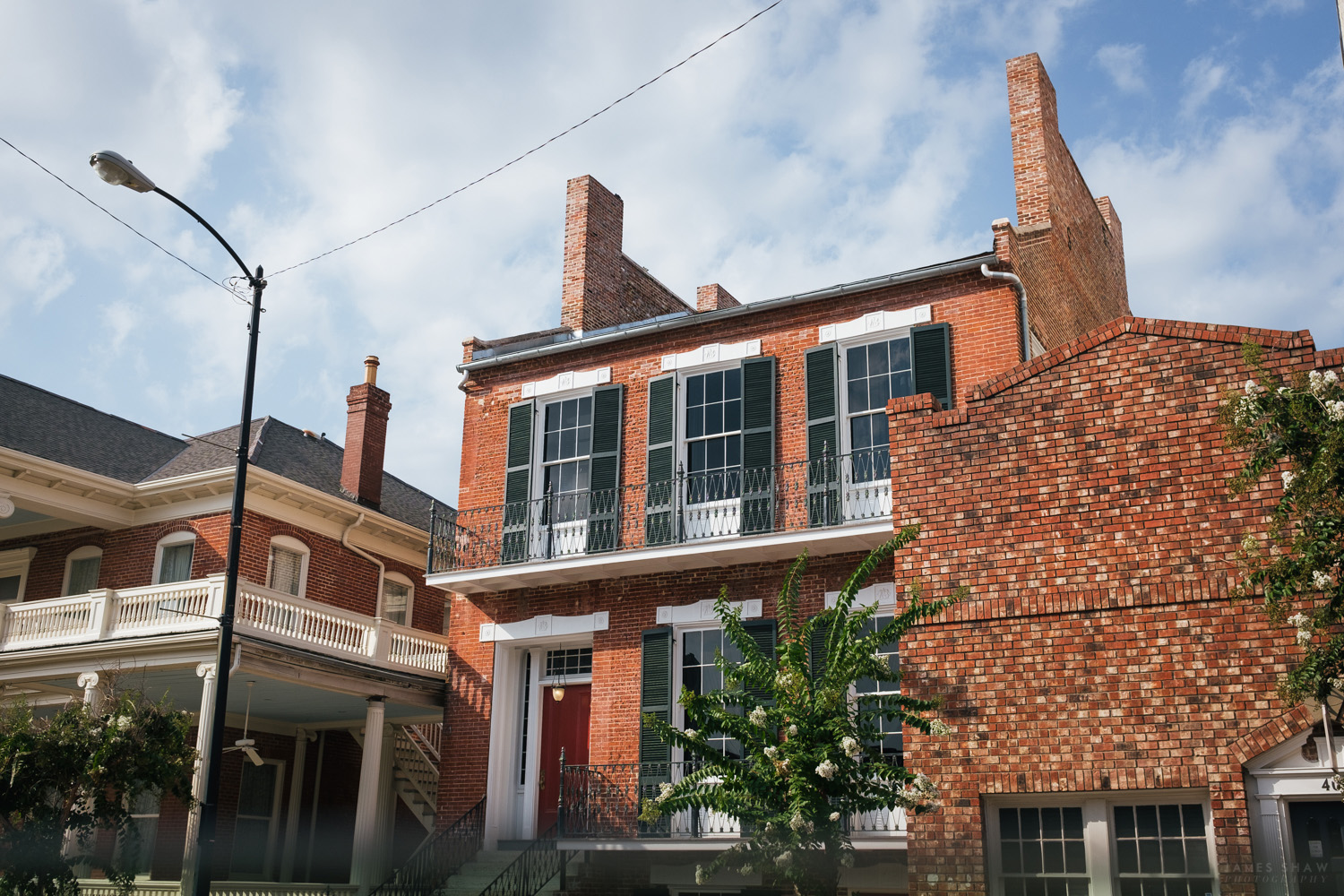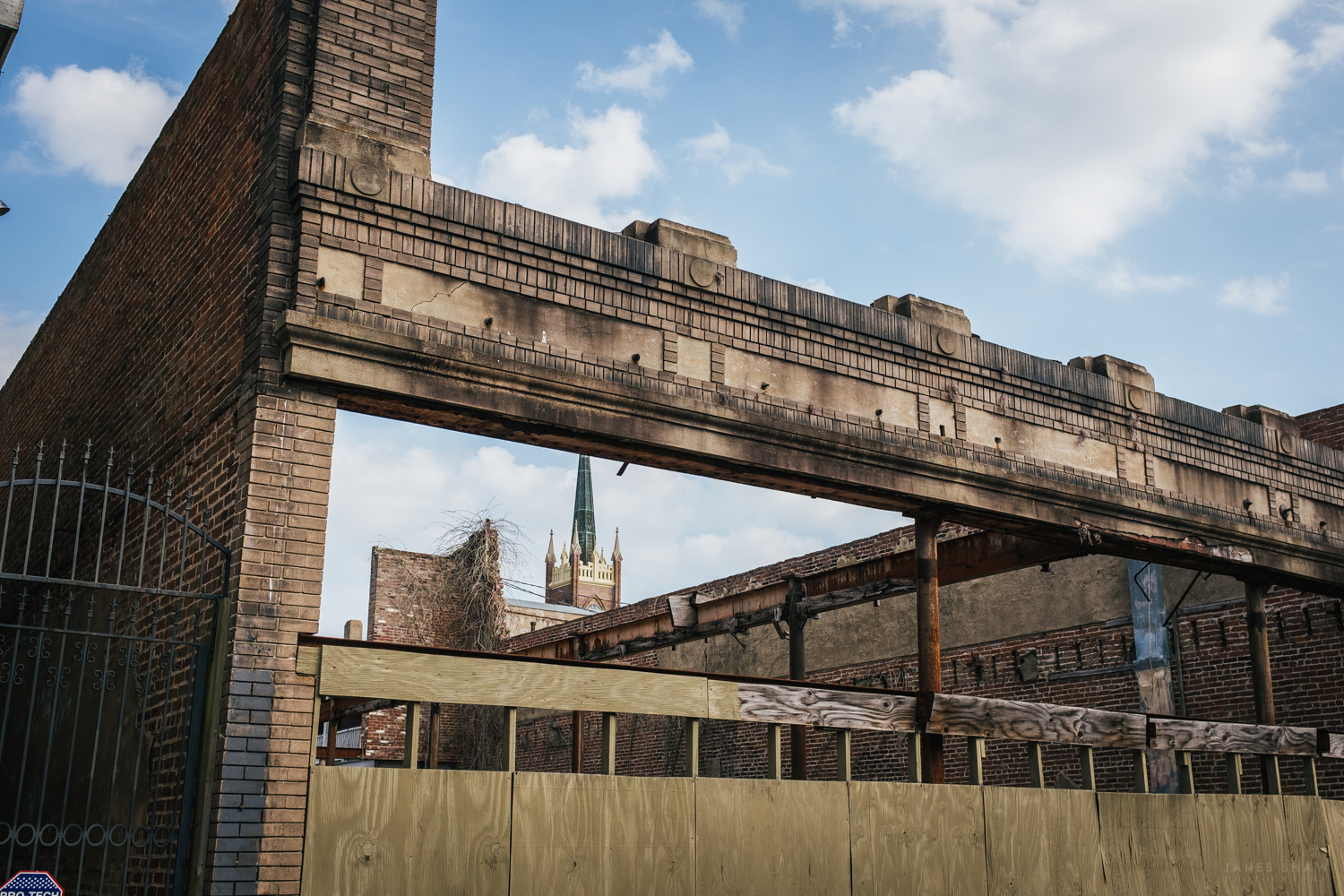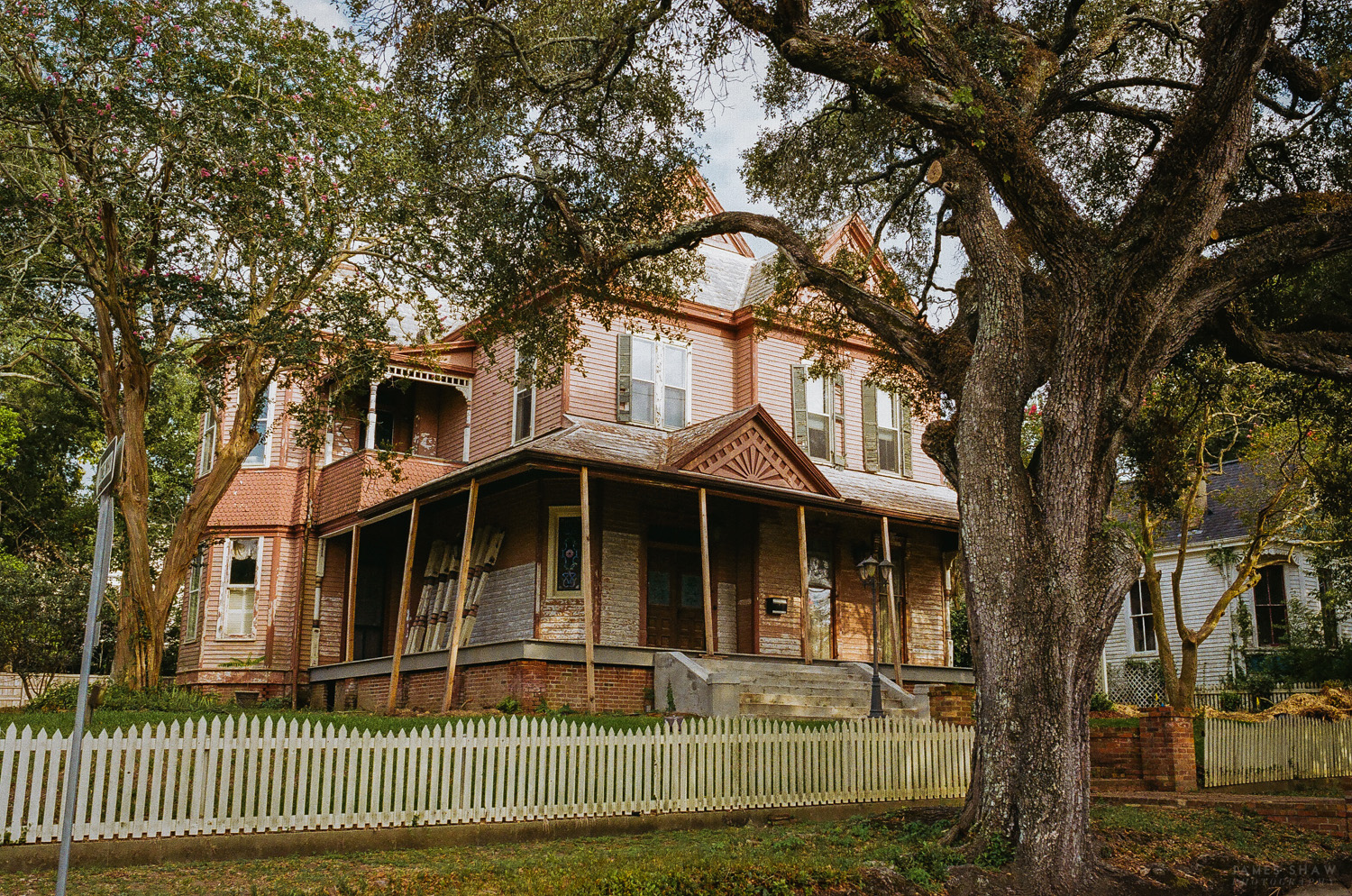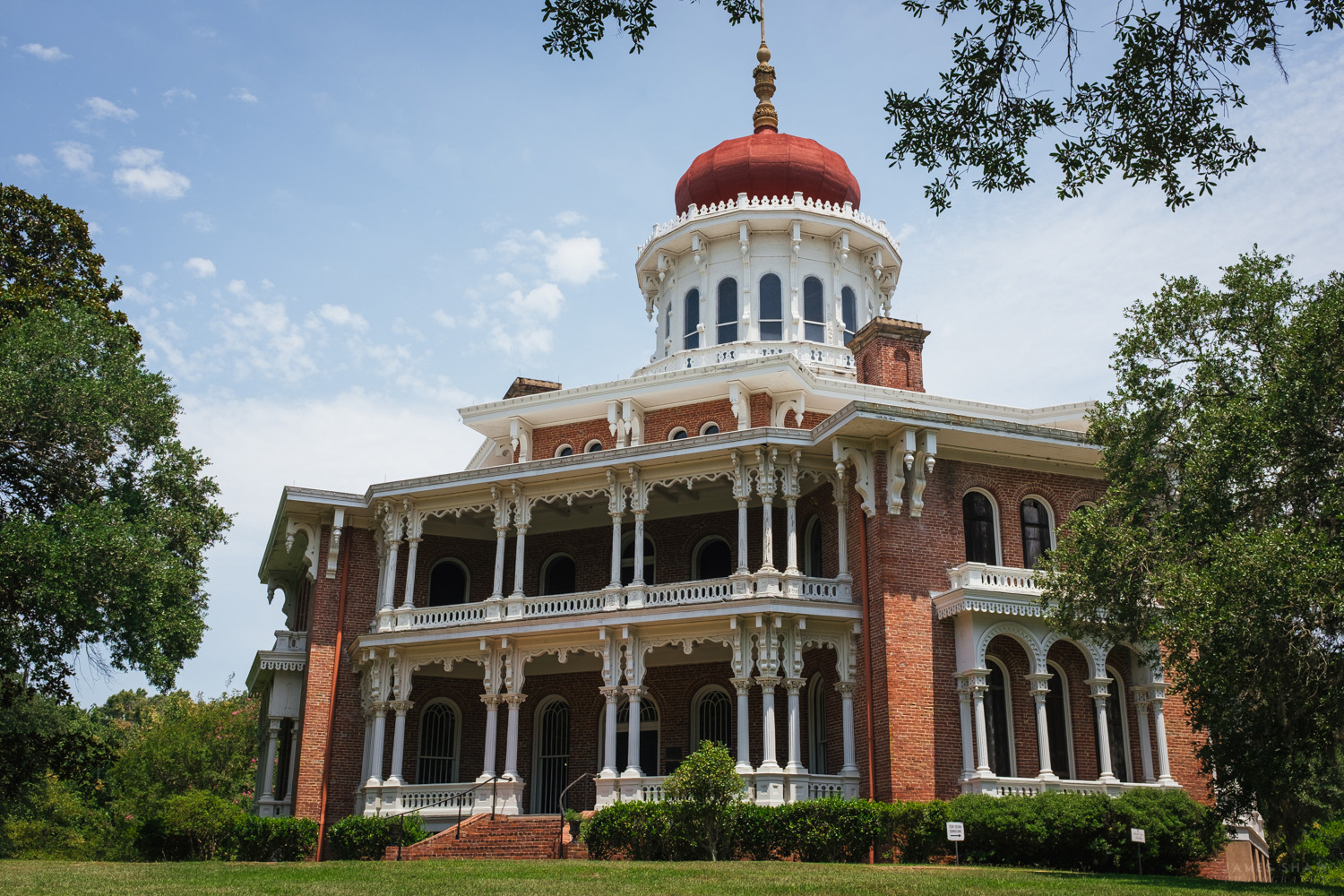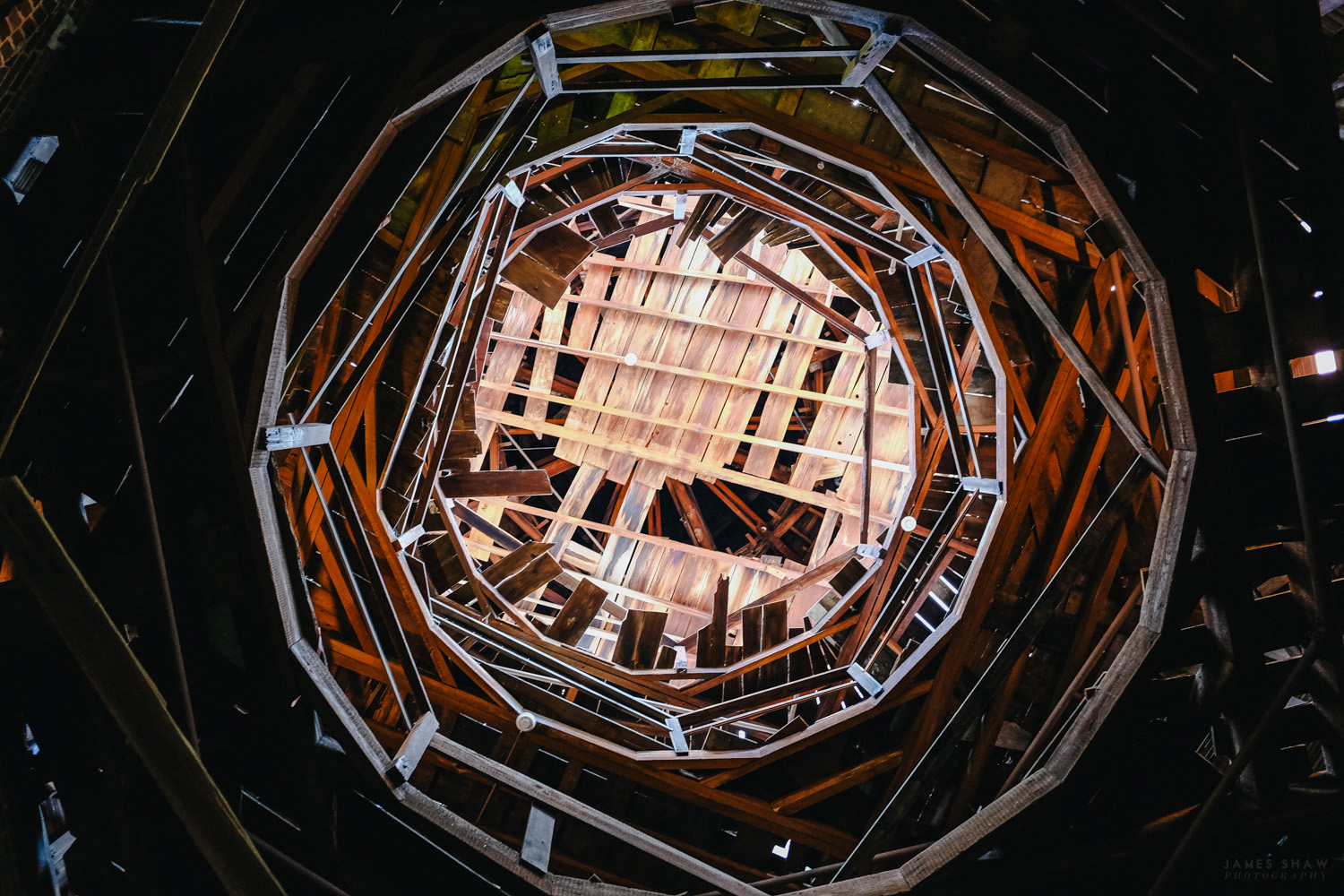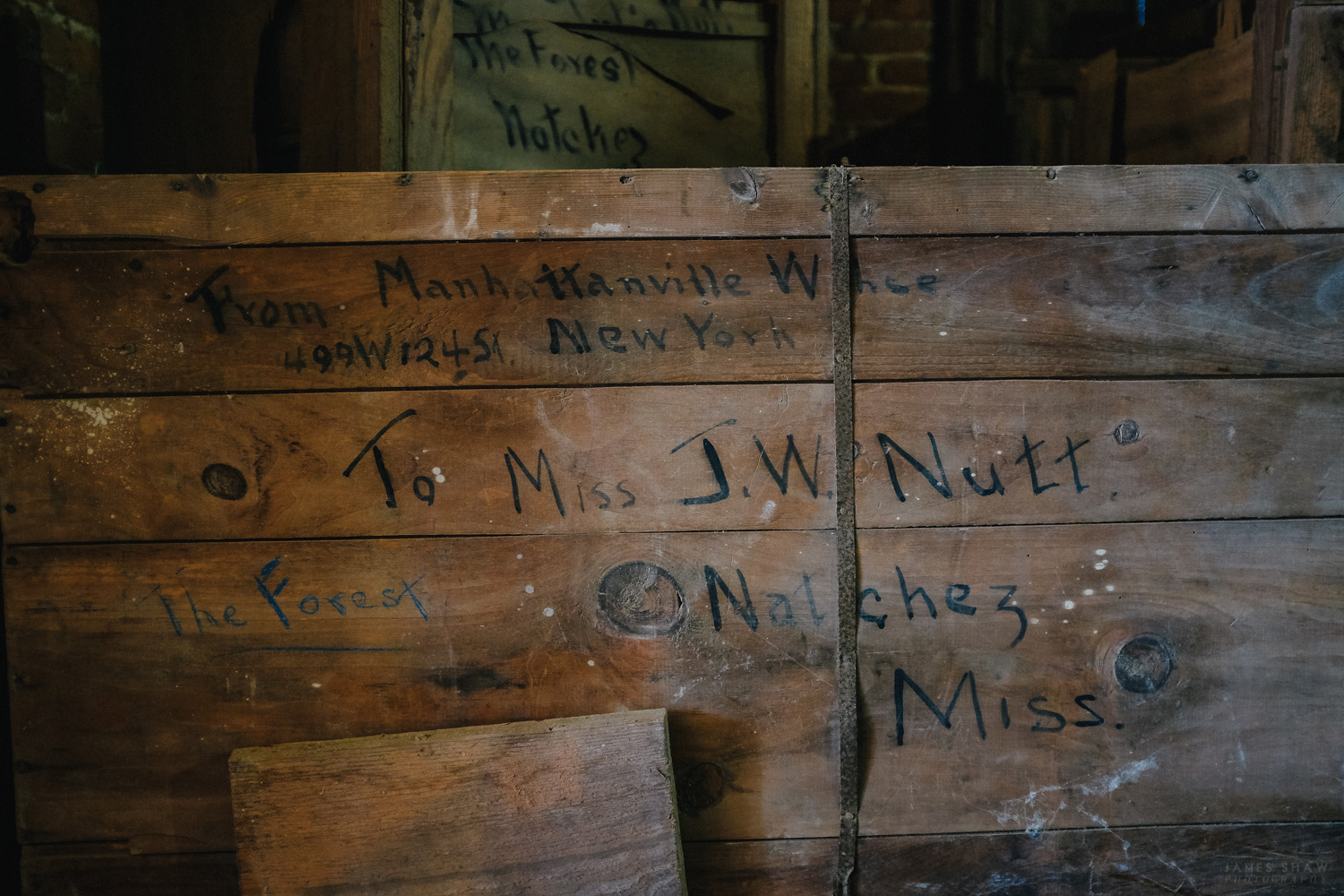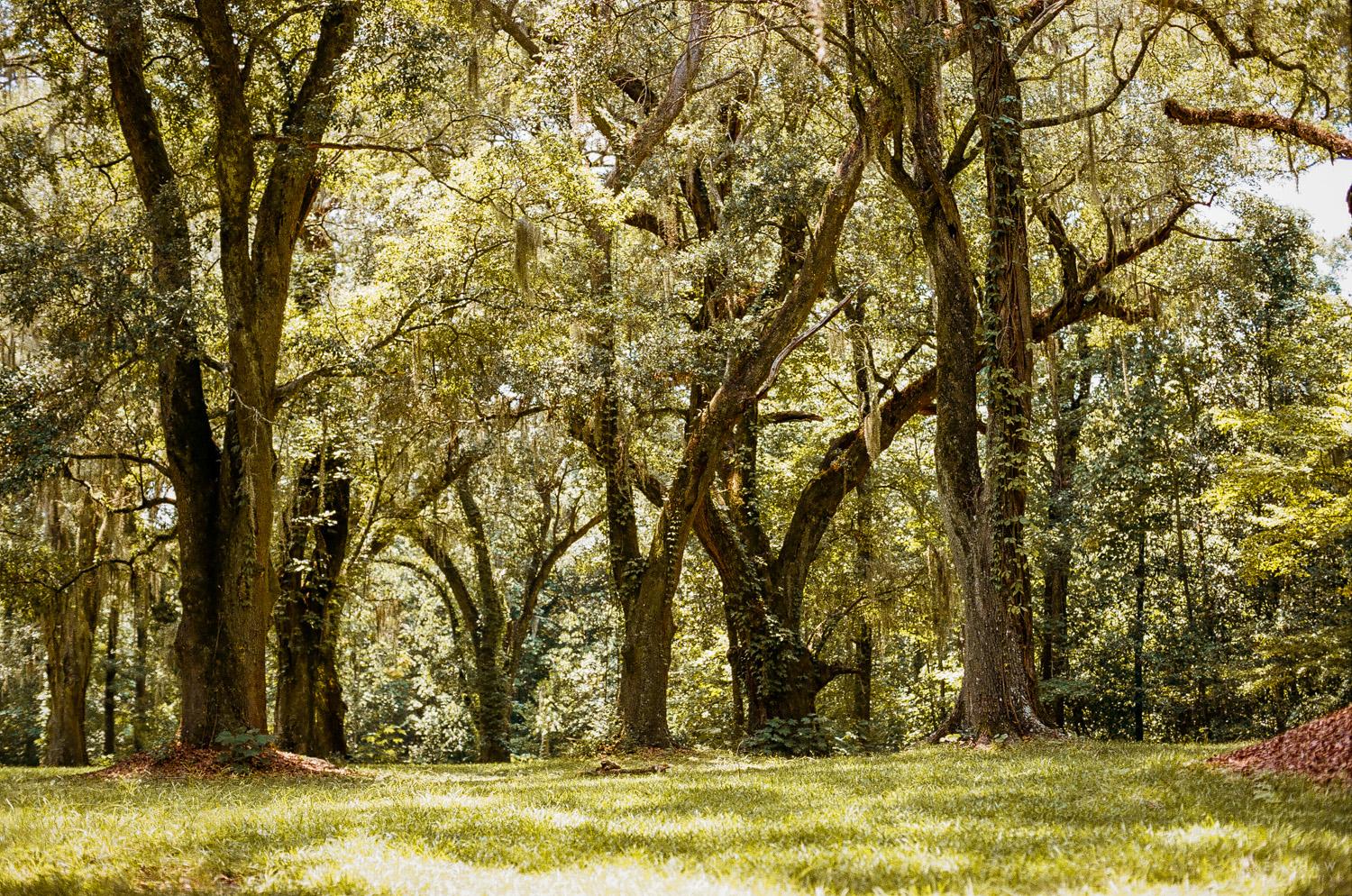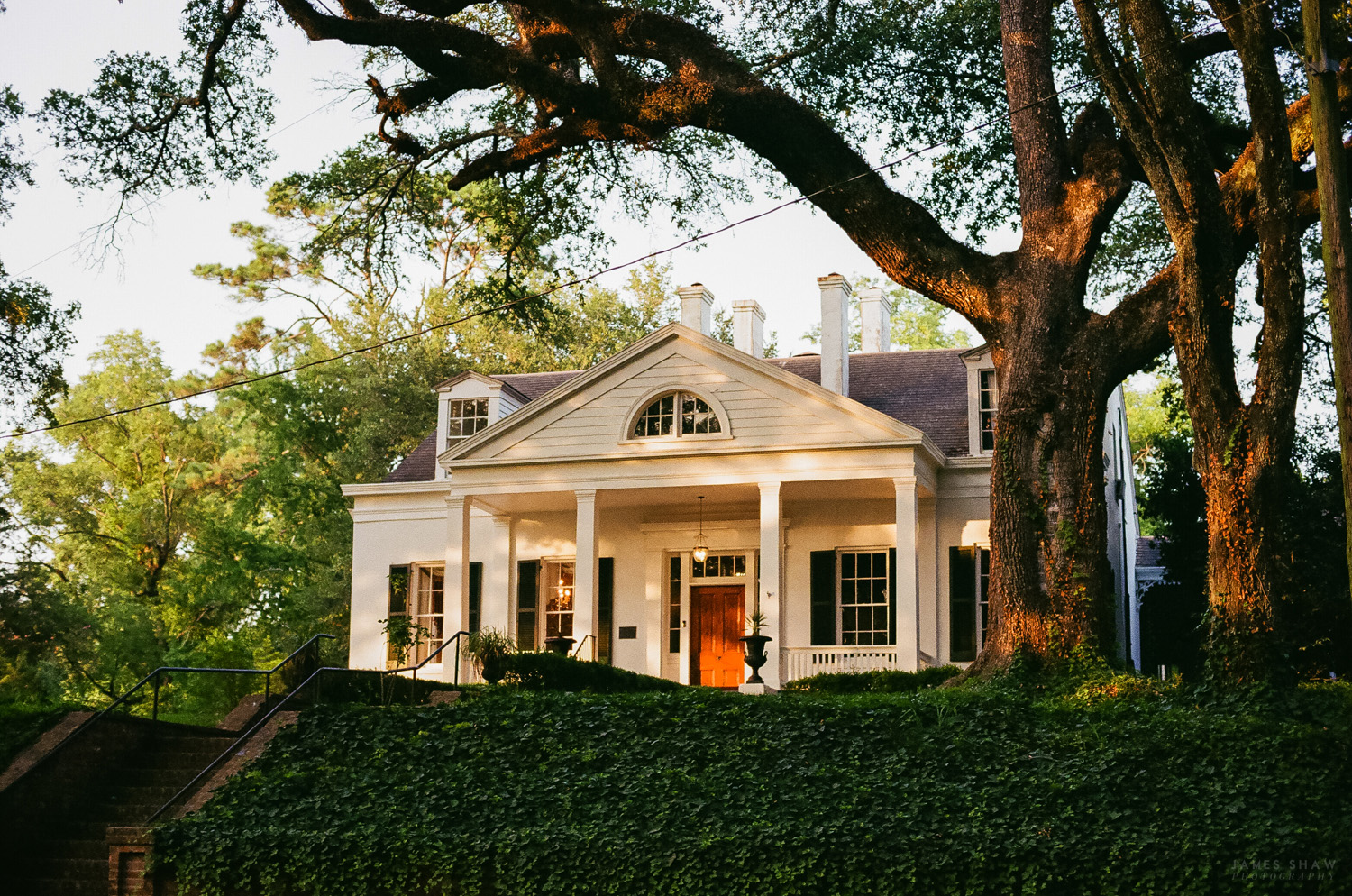Needing a little weekend getaway, Riki and I booked a room for one night in a charming old house on the bluff overlooking the mighty Mississippi River.
Natchez is beautiful and I was completely smitten by it. More than once I thought to myself, I could live here. A quick glance at the real estate prices and I thought, I could live like a KING here. I just have to be a writer or something else that requires no human contact! One day, maybe...
The streets were eerily quiet...too quiet. The kind a quiet that seems perfect at first, and then you realize you haven't seen another person in almost two days. The place was dead, but not in a way that I was used to. I had recently been to Vicksburg and the Clarksdale, where the death and decay were on full display. By comparison this place looked positively radiant. Yet it was very odd. I'm not exaggerating when I say we might have seen a dozen other people there the entire time. Now granted, it's not their high season, but still, nothing was happening.
The Clifton House, our lovely home away from home.
Natchez is home to the largest collection of antebellum homes in the US, which of course drives their tourism. Unlike other cities along the way, Natchez was spared by the Civil War, yet greatly affected by it. Leading up to the Civil War, Natchez had more Millionaires per capita than any other city in the US. Afterwards, not so much. Today it residents live for the annual pilgrimage, a major source of pride, when most of the homes are open and you can experience life prior to 1865, blue bonnets and all.
Its entire modern economy seems to be based on the Bed & Breakfast. All of the old homes, meticulously kept up, were a positive reminder of how beautiful and perfect this place could be. Yet the 'For Sale' signs were everywhere - they are practically giving these homes away. People seem to be giving up on the place. This Antebellum tourism cannot last much longer. The people are simply dying off.
So why does Natchez, this seemingly perfect small town, seem on the brink of abandonment? Well, according to more than one (younger) local, it's a mixture of old school racism and the dreaded CAVE mentality. You know the type - Citizens Against Virtually Everything. The city is barely clinging on by doing what it has done for the past 100 years, and some of its original citizens want to keep it that way. No one seems too concerned about a future when people aren't flocking to see the pageantry of 1860. And I hate to say it, but that day is coming.
Natchez remains untouched by time, and that's just how the locals like it. It's completely cut off from the outside world - it takes over an hour just to get to the nearest interstate, which makes it a hard sell for industry. Bad for business, but great if you want to feel completely cut off from the outside world. There really is a quietness that is hard to describe.
But I couldn't help but marvel at the potential of the place. I mean, this is the next Savannah or Charleston just waiting to happen. In the 1970s and 80s those were two of the most run down and decaying places in the country, and yet, they were too beautiful to be forgotten. Now they are two of the hottest cities on the planet. It took a lot of work, but in the case of Natchez, not a whole lot of work needs to be done. The place is gorgeous.
A resurgence is coming, I really do hope. It's simply too beautiful and well maintained to let slide into the abyss. But alas, this is Mississippi, where very little makes sense.
Anyway, Natchez was the perfect weekend getaway. If you're looking for a quiet weekend away with a great meal, look no further. Vacations don't need to be epic, they just need to get you out. Here's to many more weekend getaways with my girl.
- SHOT ON A MIXTURE OF BOTH 35MM FILM & DIGITAL, IN NO PARTICULAR ORDER -
Arlington Plantation
Right off the bat we stumbled upon this abandoned gem, the Arlington Plantation. I had seen photos before and knew it was somewhere around Natchez, but I was surprised when we drove right past it. Our trip was off to a good start already.
Not many documents survive to tell us about Arlington. The exact date of construction is unknown, although experts put in around 1819-20. It exchanged hands a few times over the years, eventually being abandoned and falling into disrepair. It was declared a National Historic Landmark in 1974, but as so often the case, no one really cares.
In 2002 a fire raged through the upper floors, completely ruining the attic and roof. Luckily the main house was saved. The Historic Natchez Foundation was quick to pay for a new roof, hoping the attention would lead to the sale and restoration of the house, but no such luck. Its owner has been taken to court multiple times since for lack of upkeep, and despite his promises to fix her, she sits abandoned, quickly appraoching the point of no return. With all the amazing (and super inexpensive) houses on the market right now, it's impossible to think that Arlington will ever be saved.
I couldn't believe the views. Perched high along the bluffs of the Mississippi, I'm not used to such elevation so close to New Orleans. Of course, on the other side of the grand river sits Louisiana, flatter than a 2-year-old Coke. It's no wonder the millionaires chose to built their estates over here, and let Louisiana be nothing more than farm land. After all, it was the yearly floods that made the soil so fertile, so rich. It's not hard to imagine how life once was.
Longwood Plantation
Longwood Plantation has a fascinating history. At five stories, 32 rooms, and 30,000 square feet it is an architectural masterpiece...and completely unfinished. It was going to be unlike anything else in the South. The owner, Haller Nutt, hired famous architect Samuel Sloan of Philadelphia to build him an "Orient Villa", complete with onion dome. Construction began in 1860 and you guessed it, halted in 1861 with the outbreak of the Civil War. All the workers from the north simply abandoned their posts and returned home, leaving their tools in place. No one thought the war would last more than a few months. They never returned, obviously.
After losing their fortune, the Nutt Family continued to live in the bottom floor (a meager 10,000 square feet) well into the 20th century. No one in the family ever had the money to finish the house. If it wasn't for the fact that their entire fortune was built on the backs of slaves, you might even feel sorry for them. Luckily for us, the place still stands and is an amazing historic artifact.
IF YOU'VE MADE IT THIS FAR, congrats! If at anytime in this post you thought to yourself, "Woah, Riki looks cool!", then I have good news for you. You can look cool like Riki! Just check out HEMLINE and use code riki10 at checkout to save 10% your order plus free shipping! Check it out if you feel so inclined. Thanks for reading!





